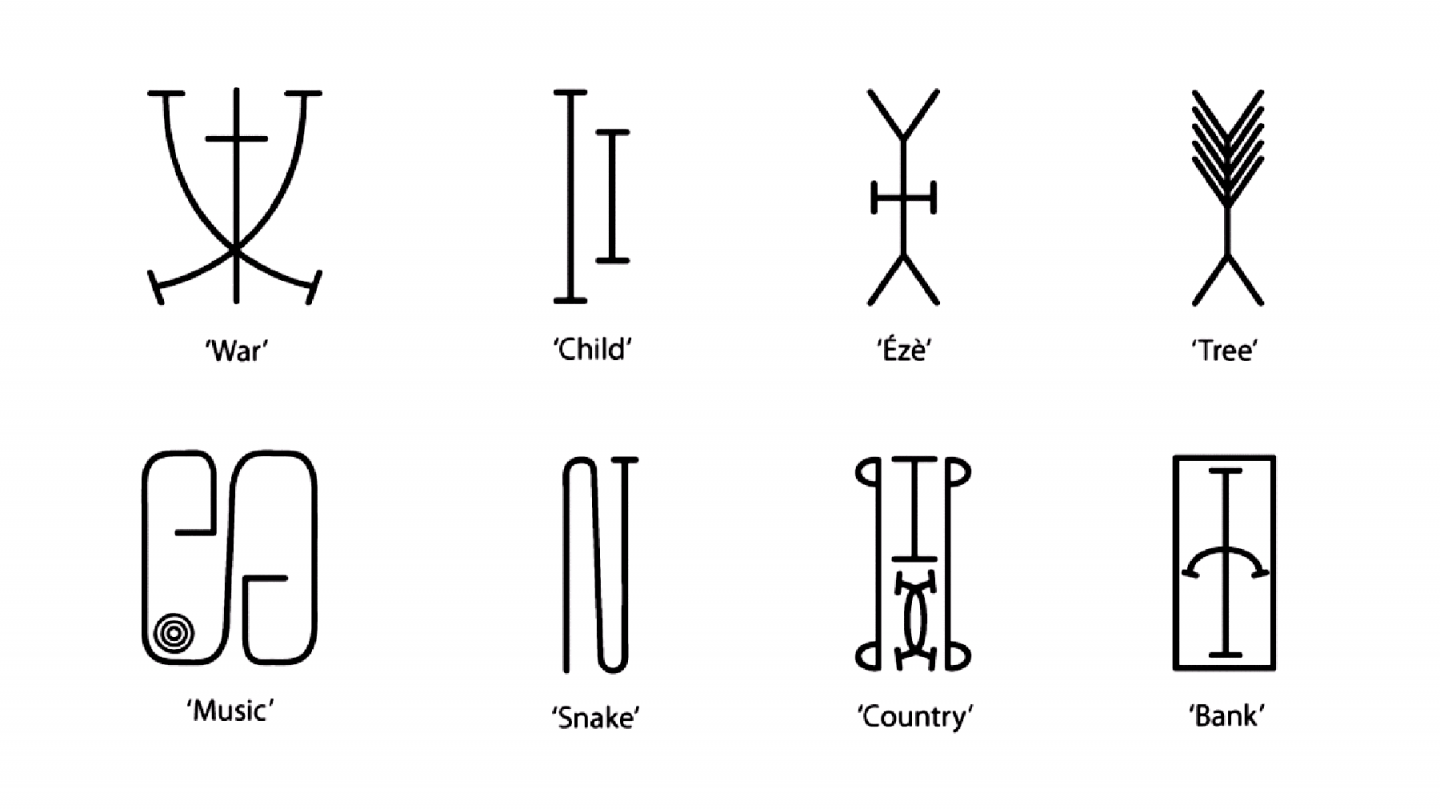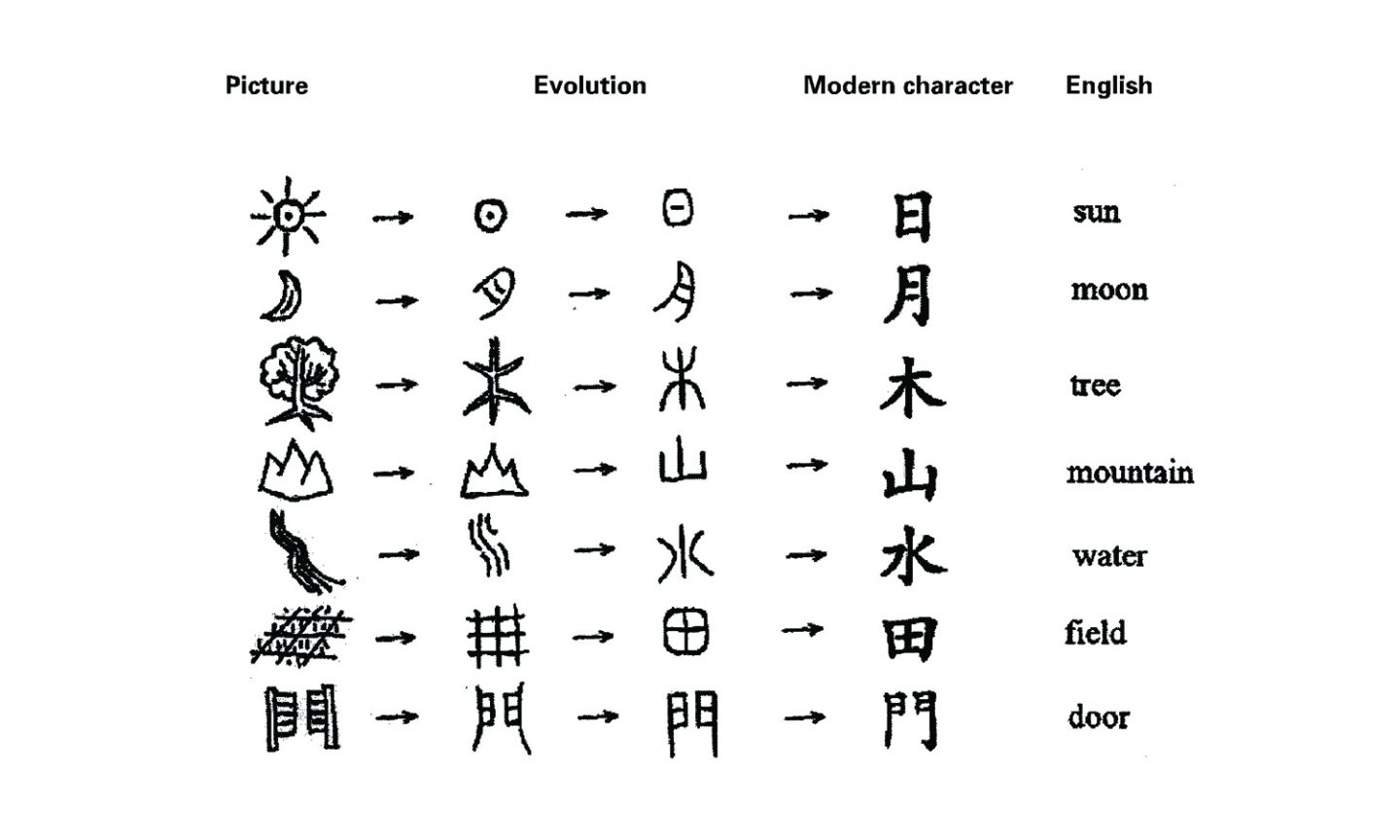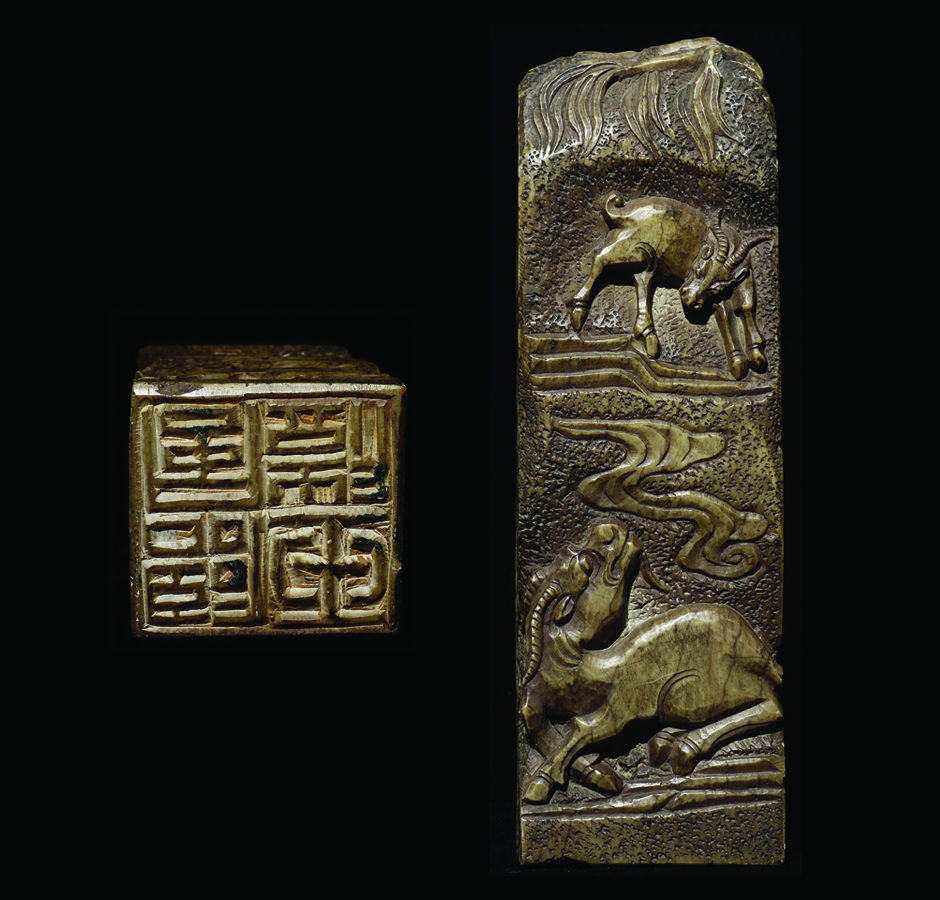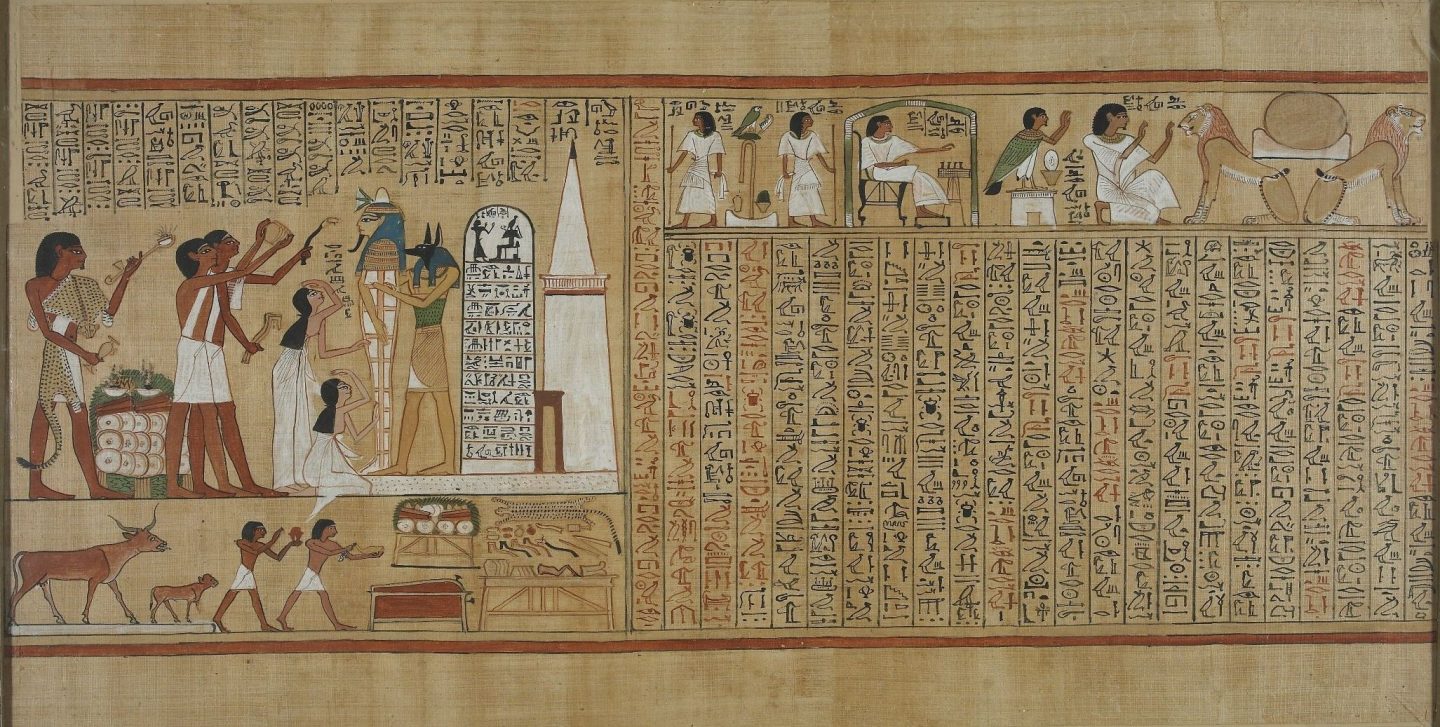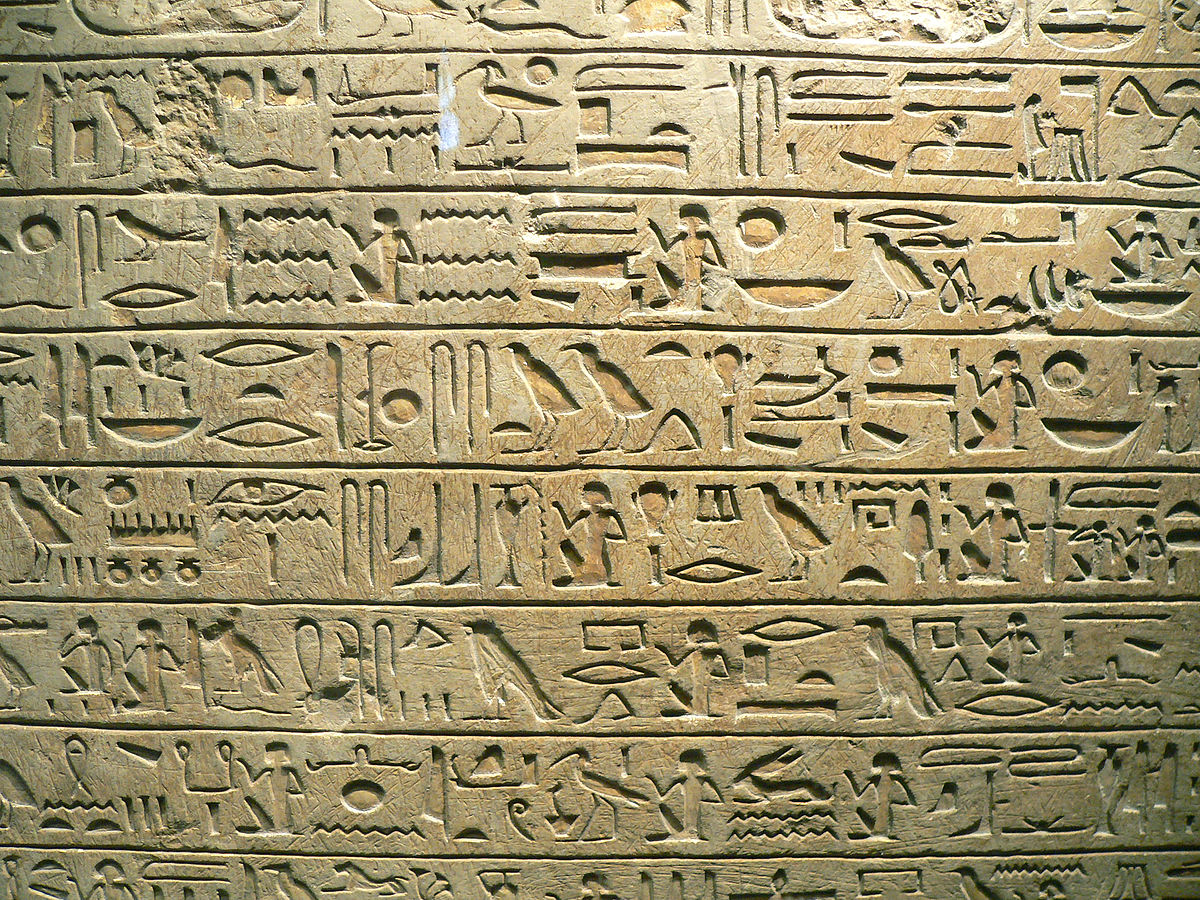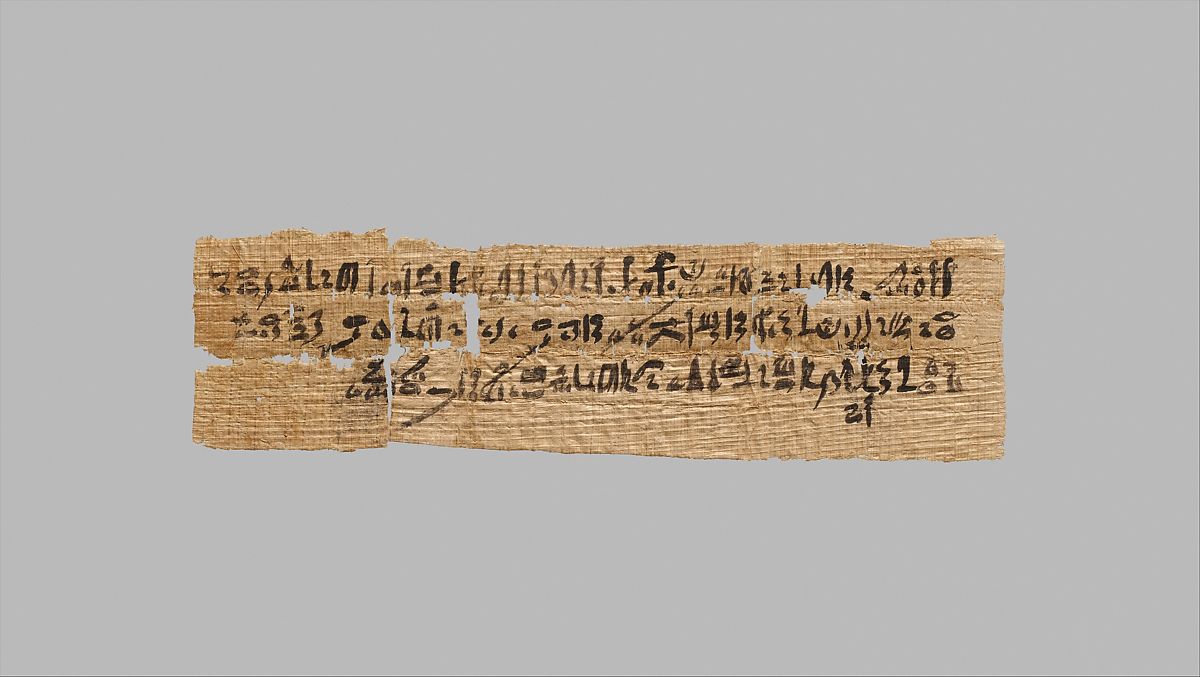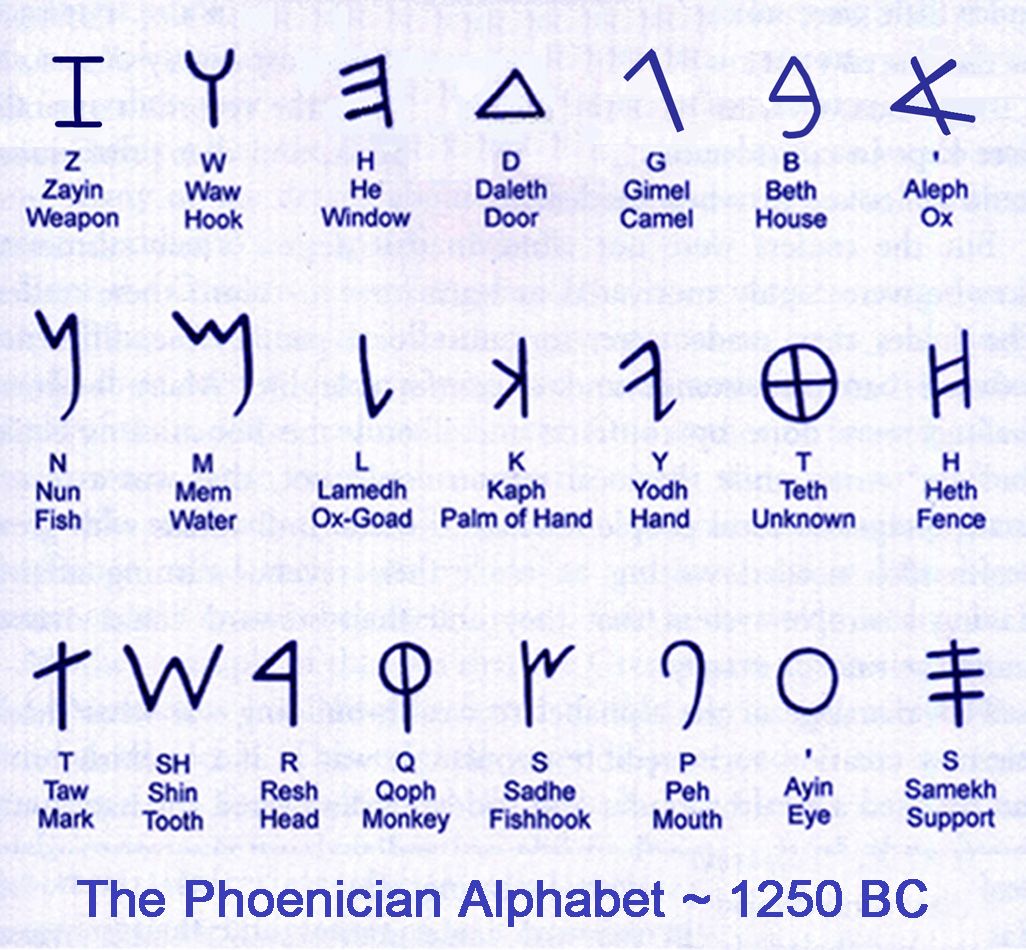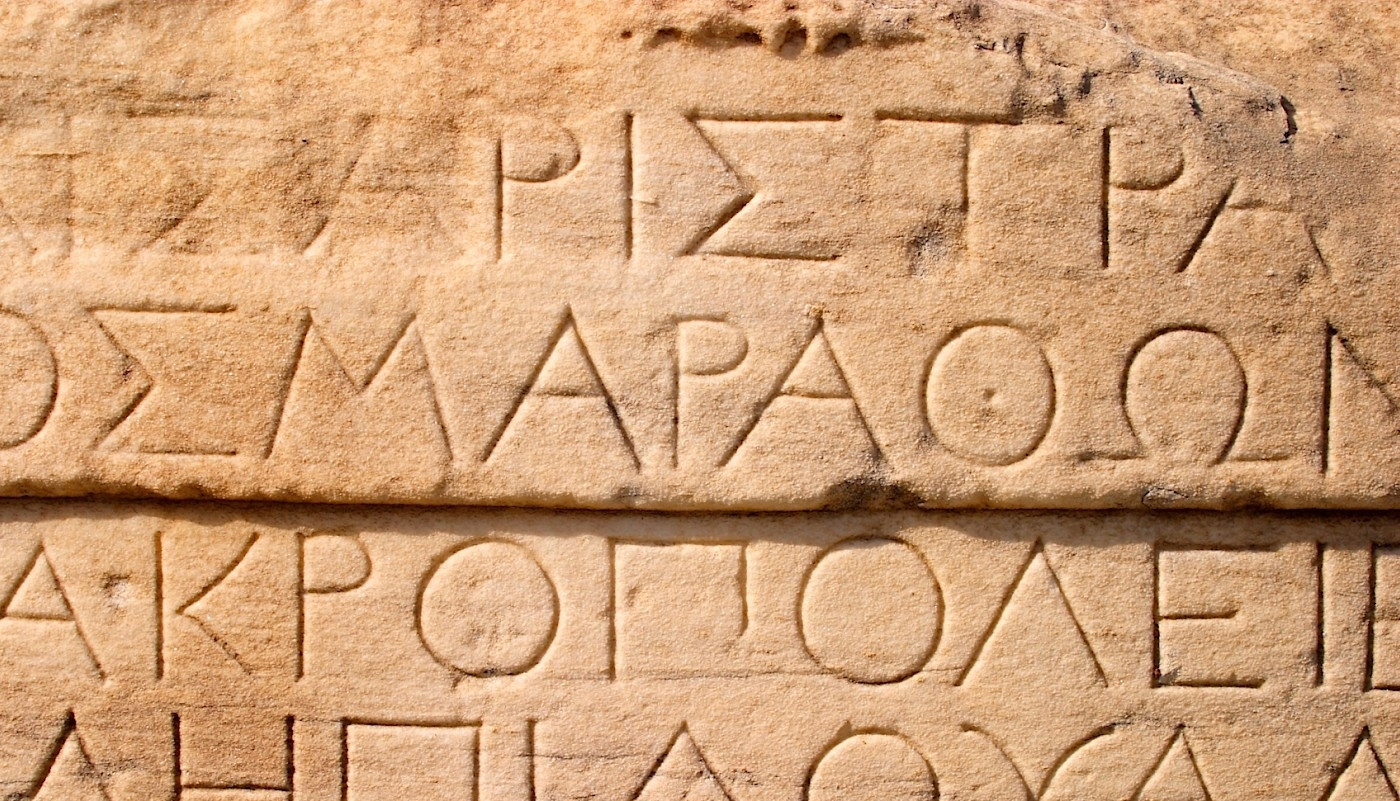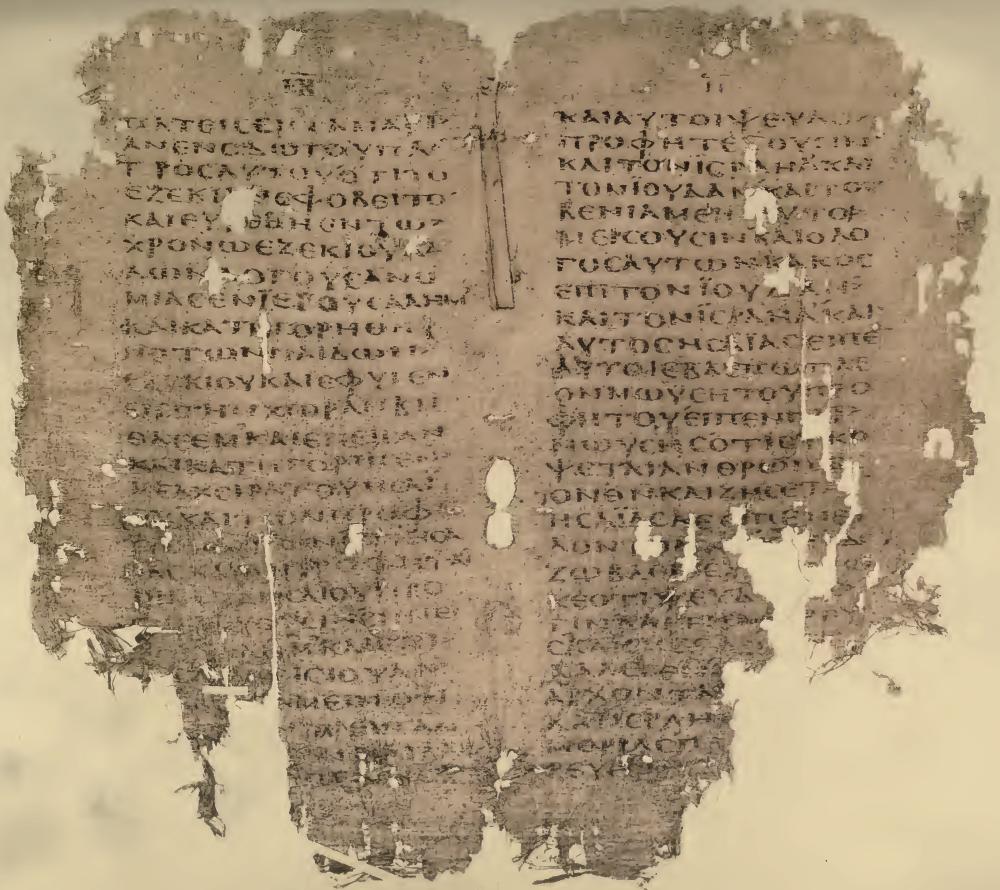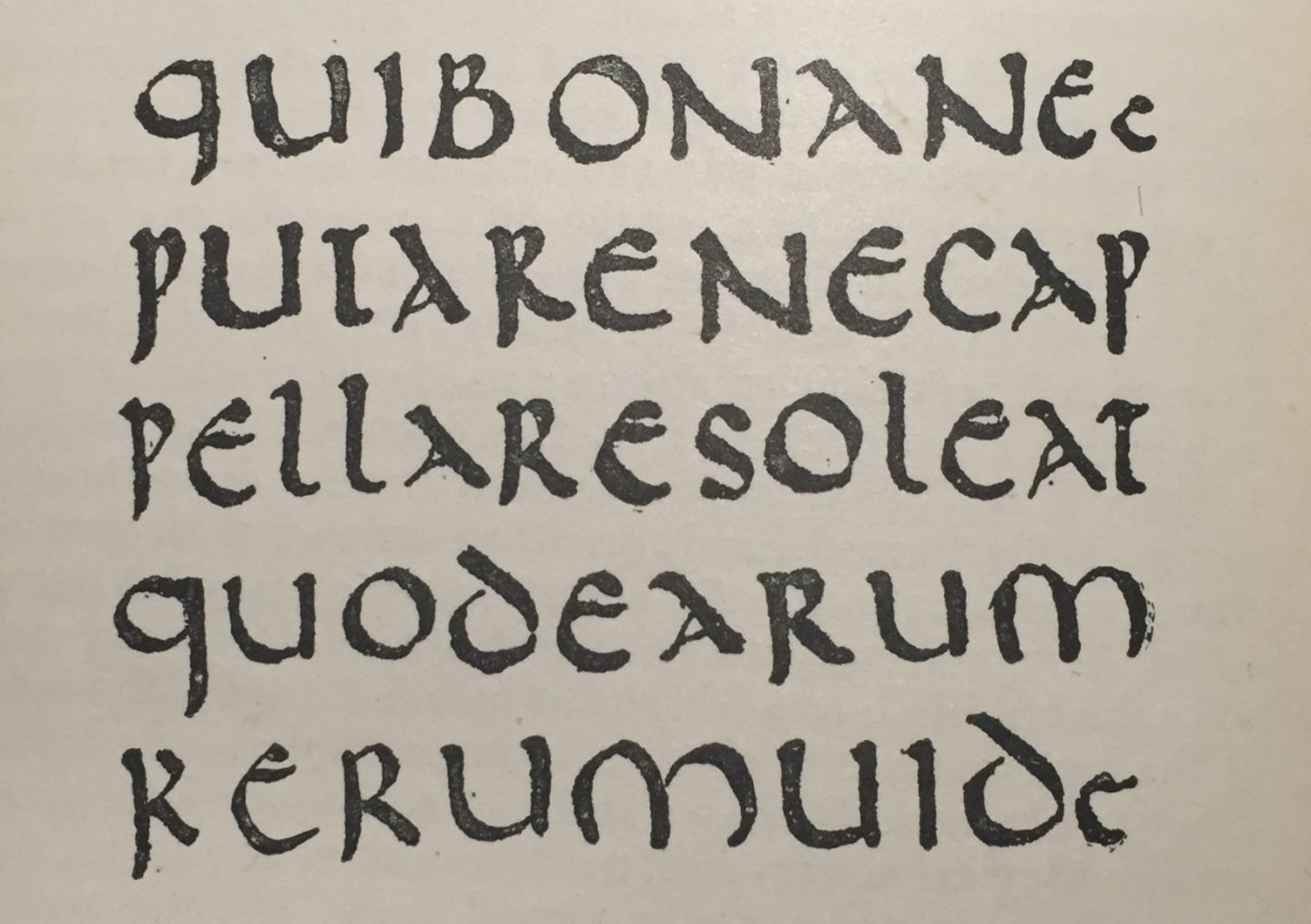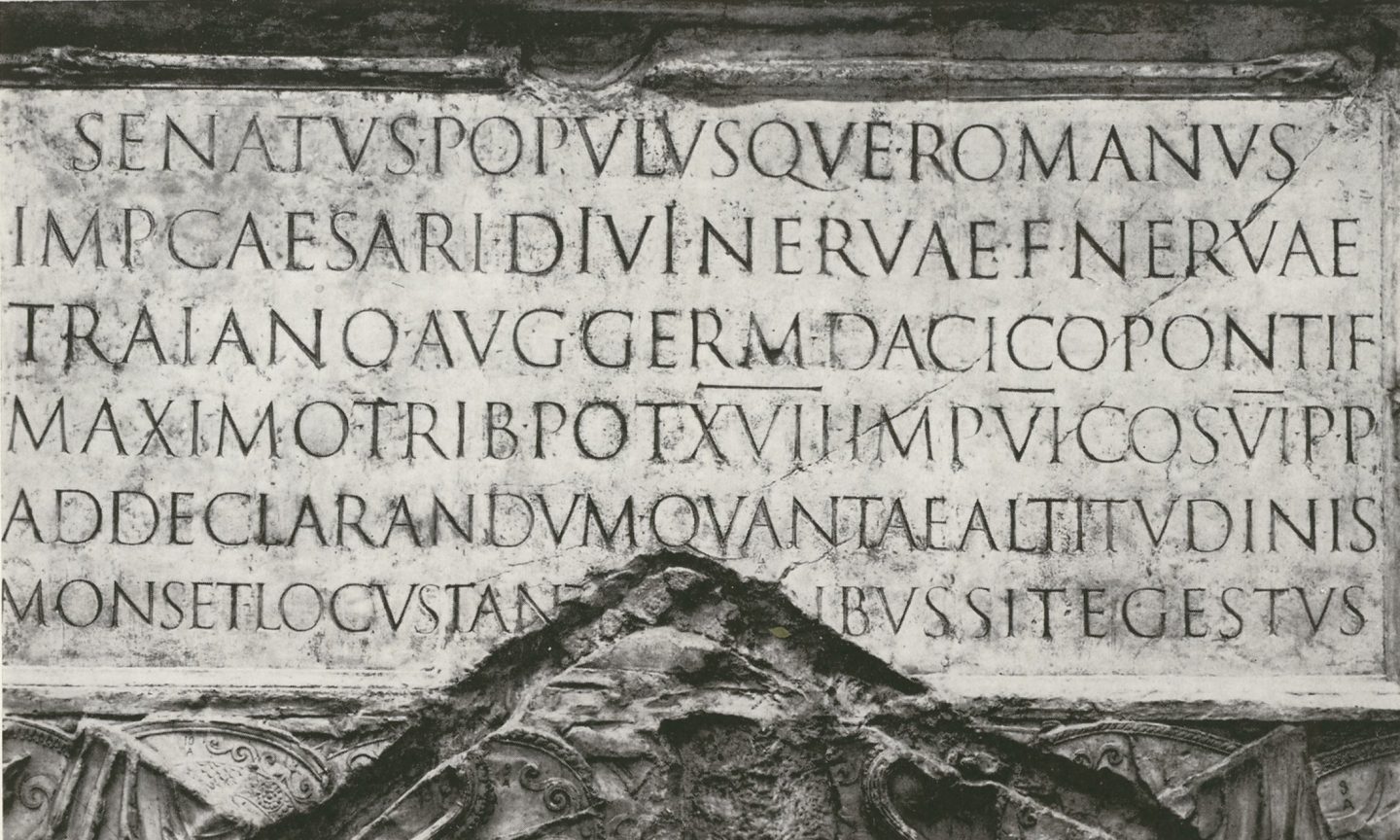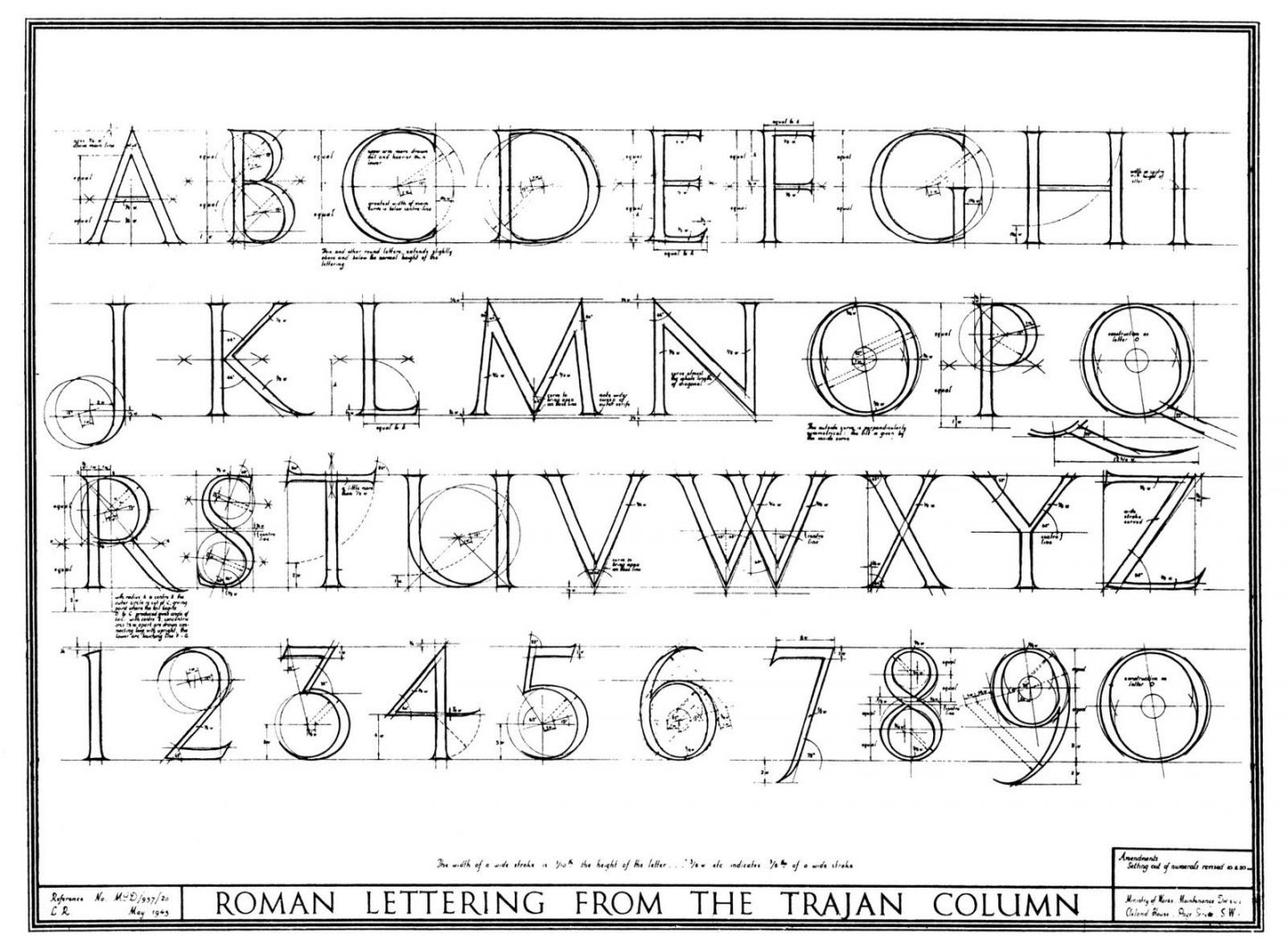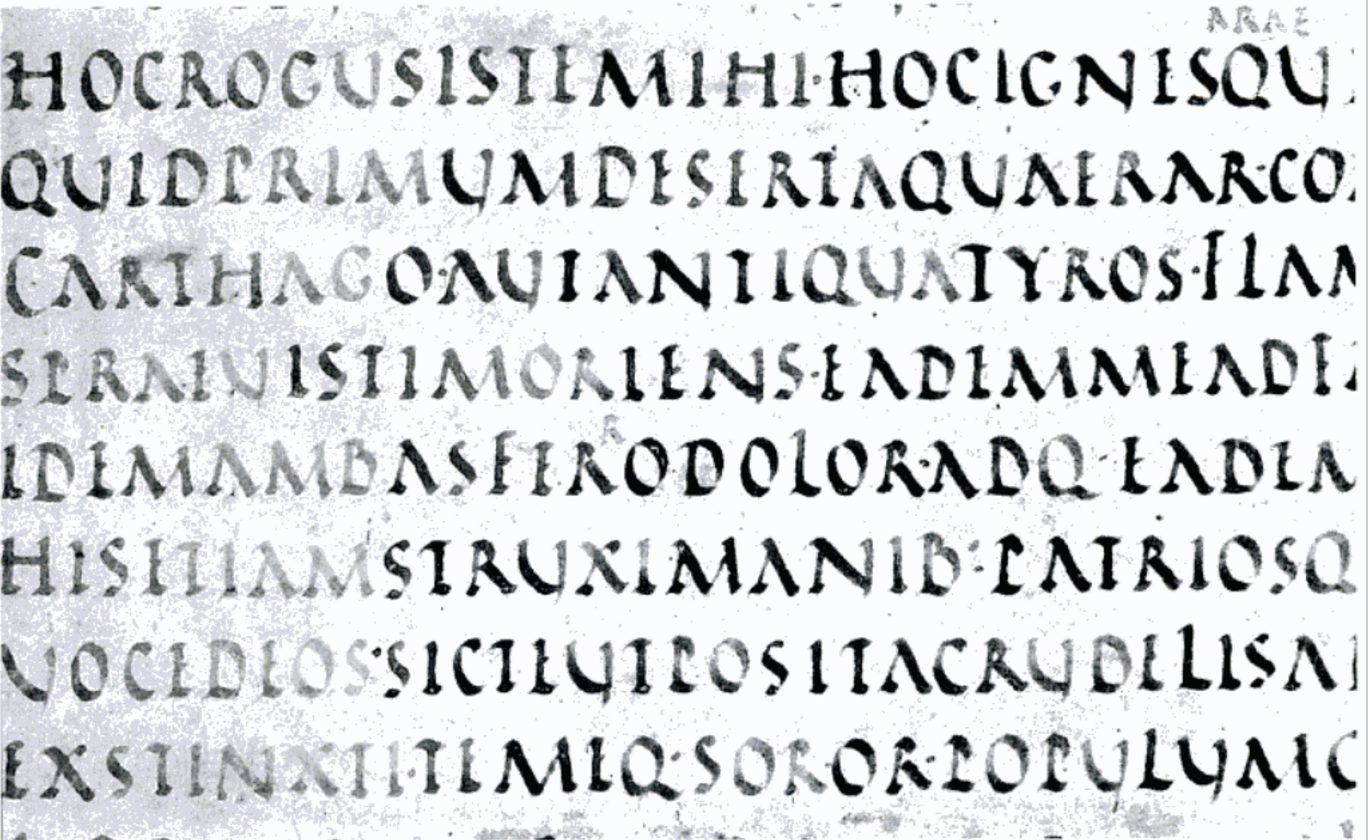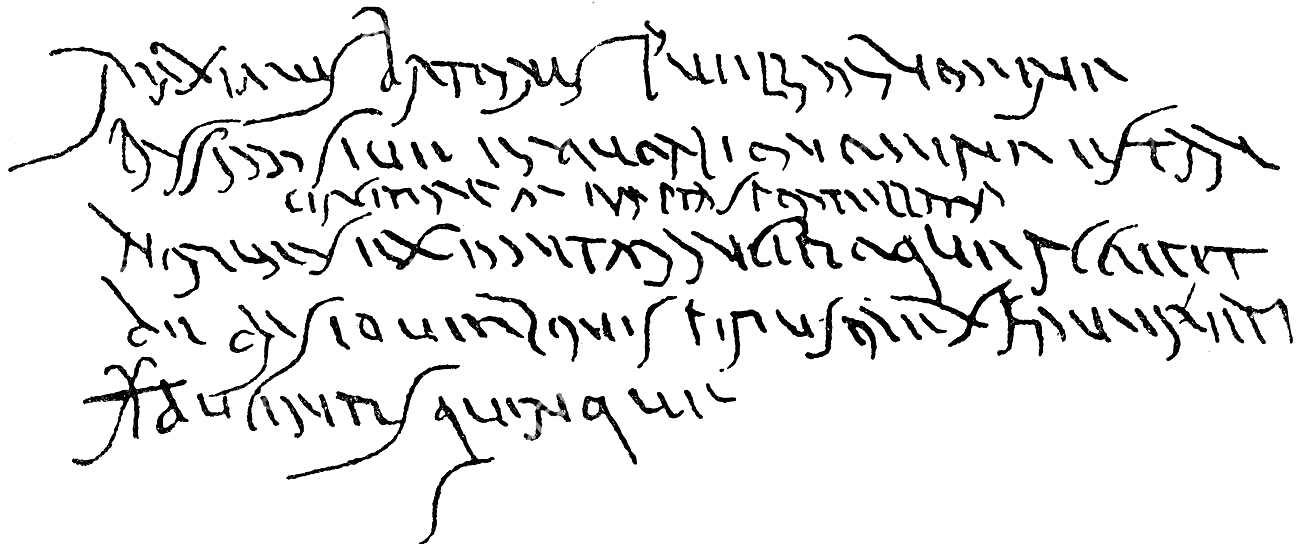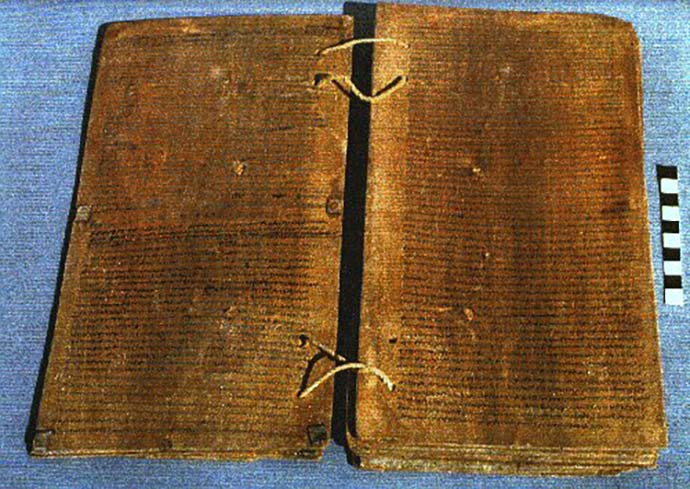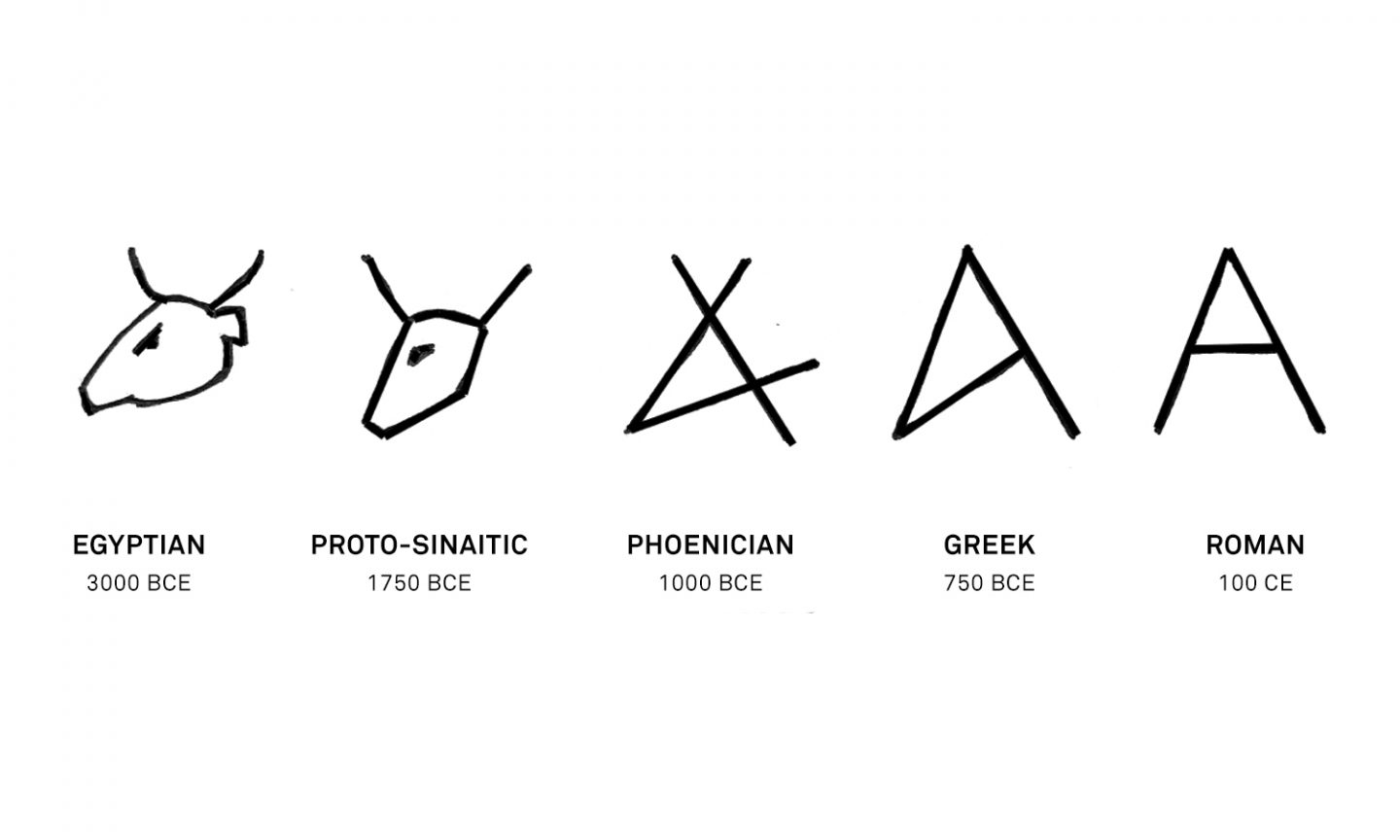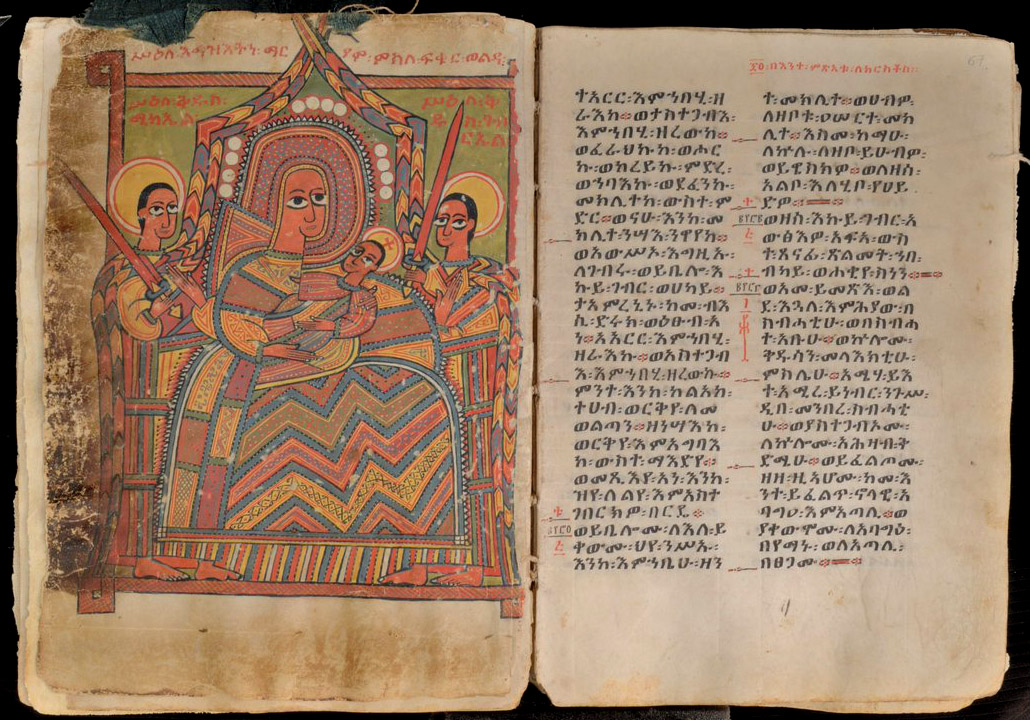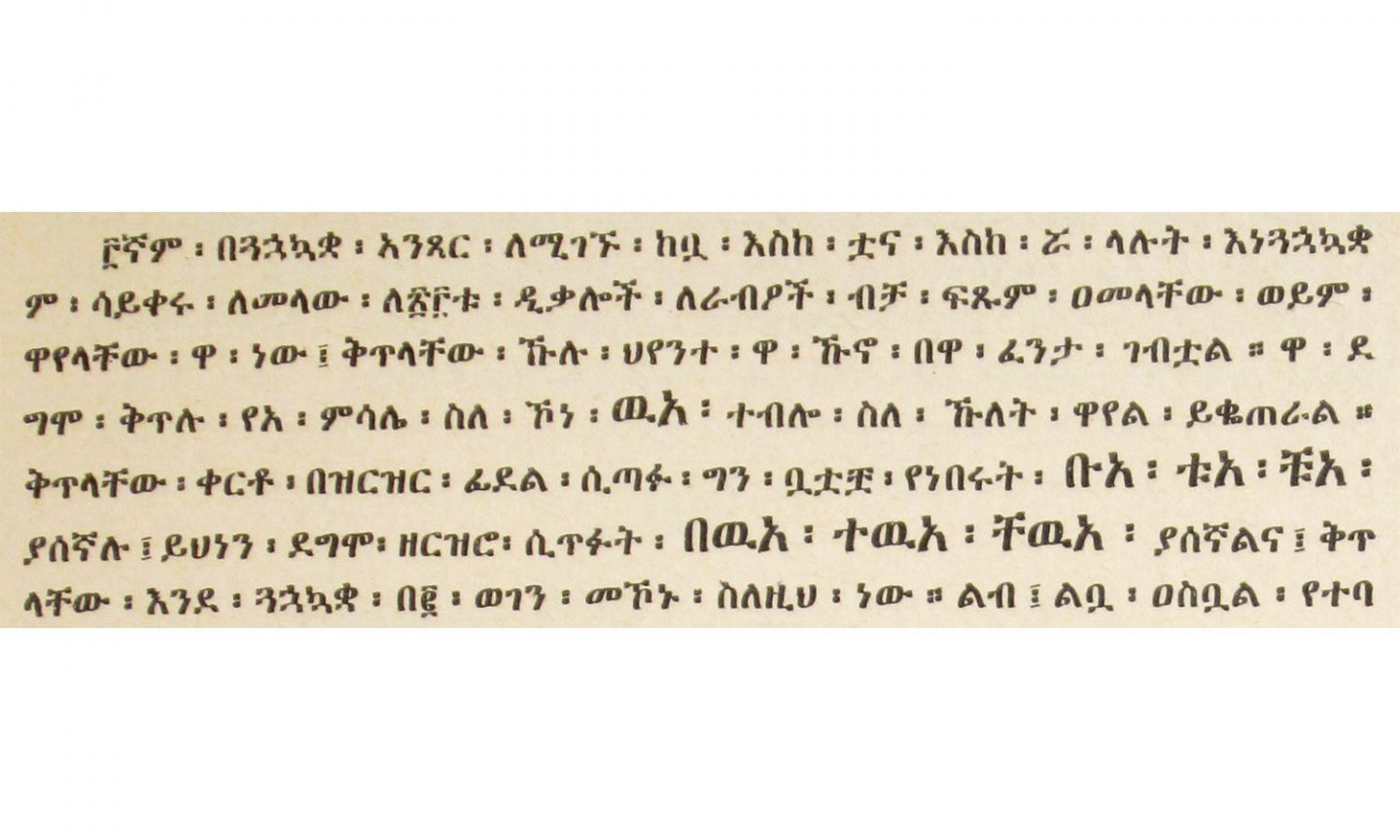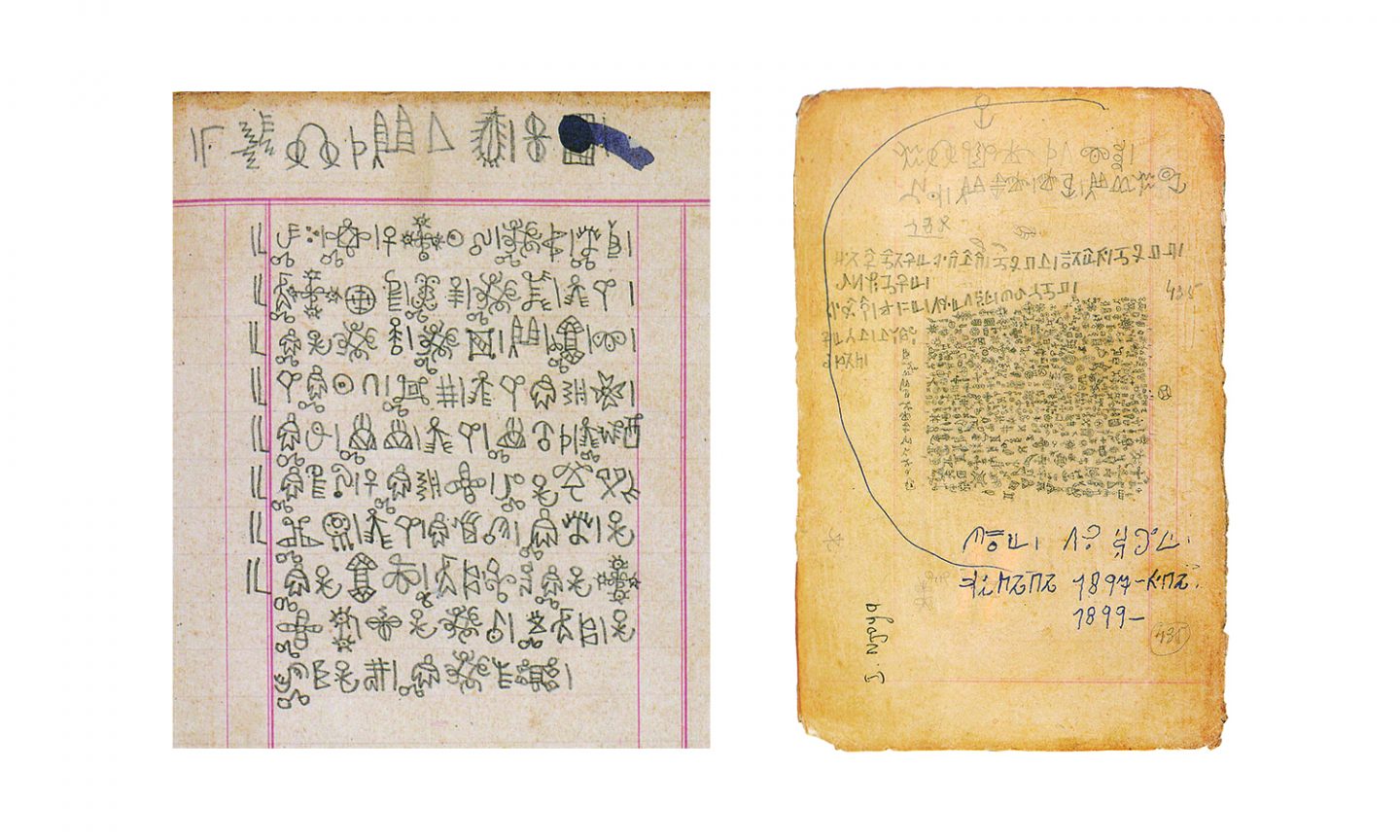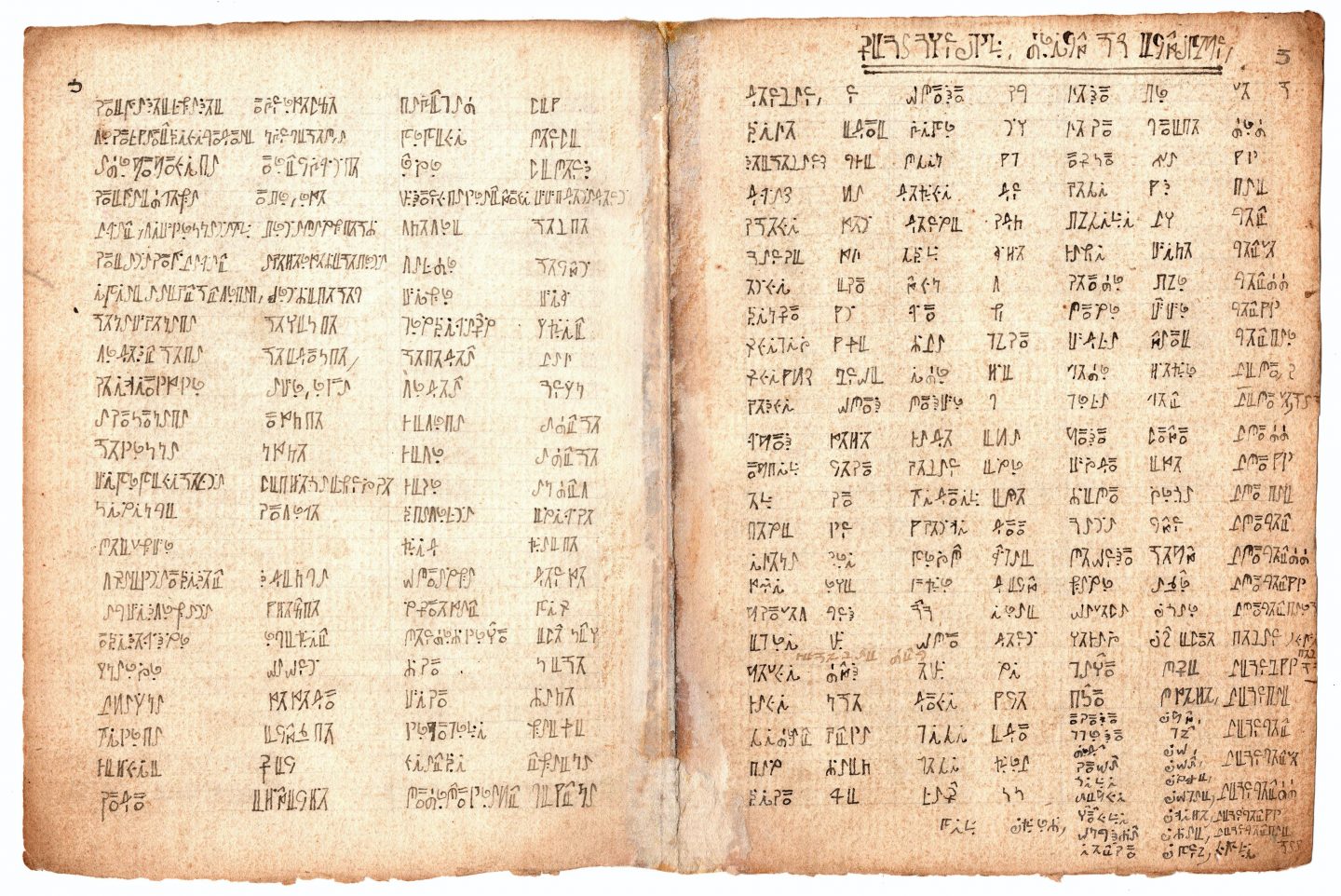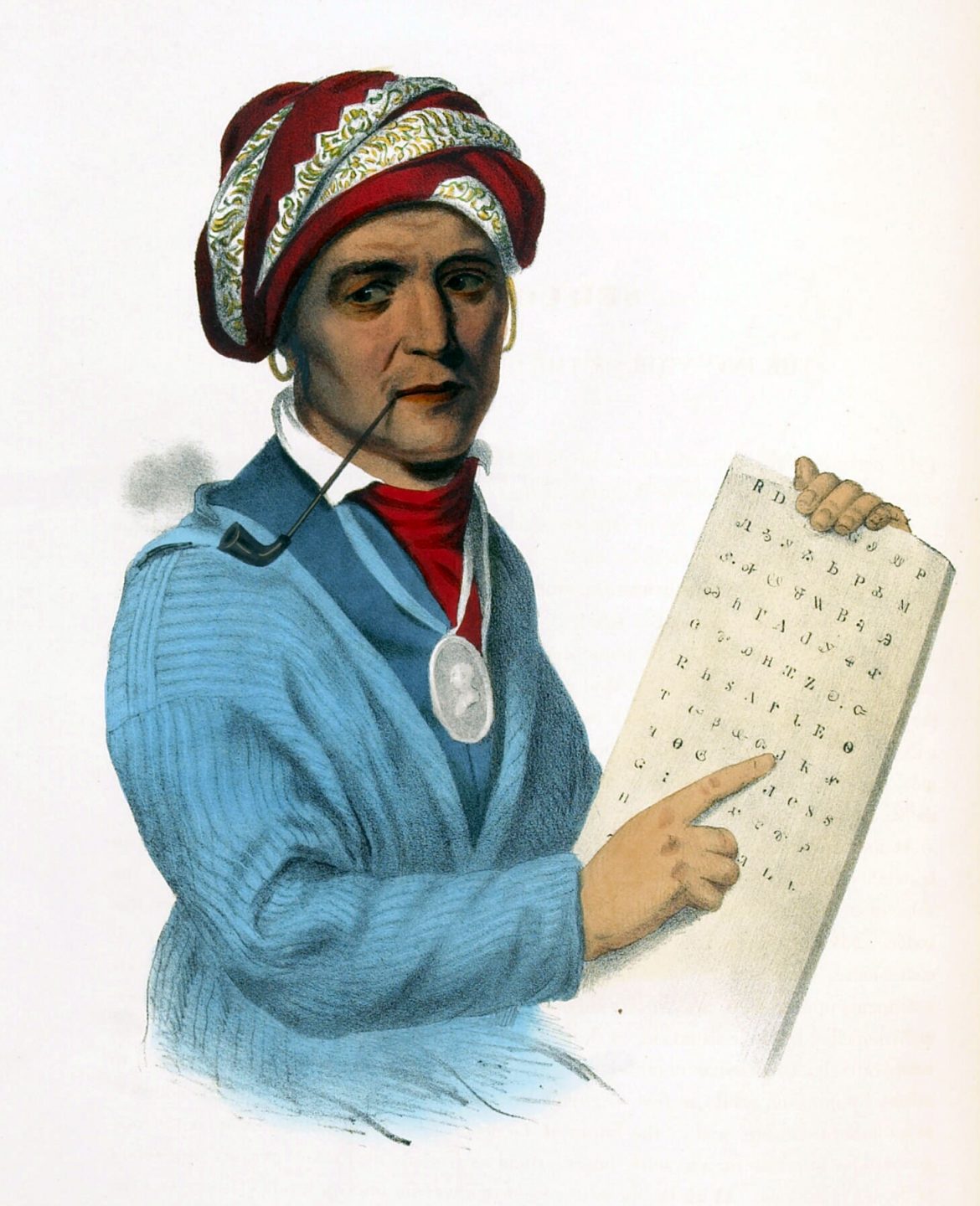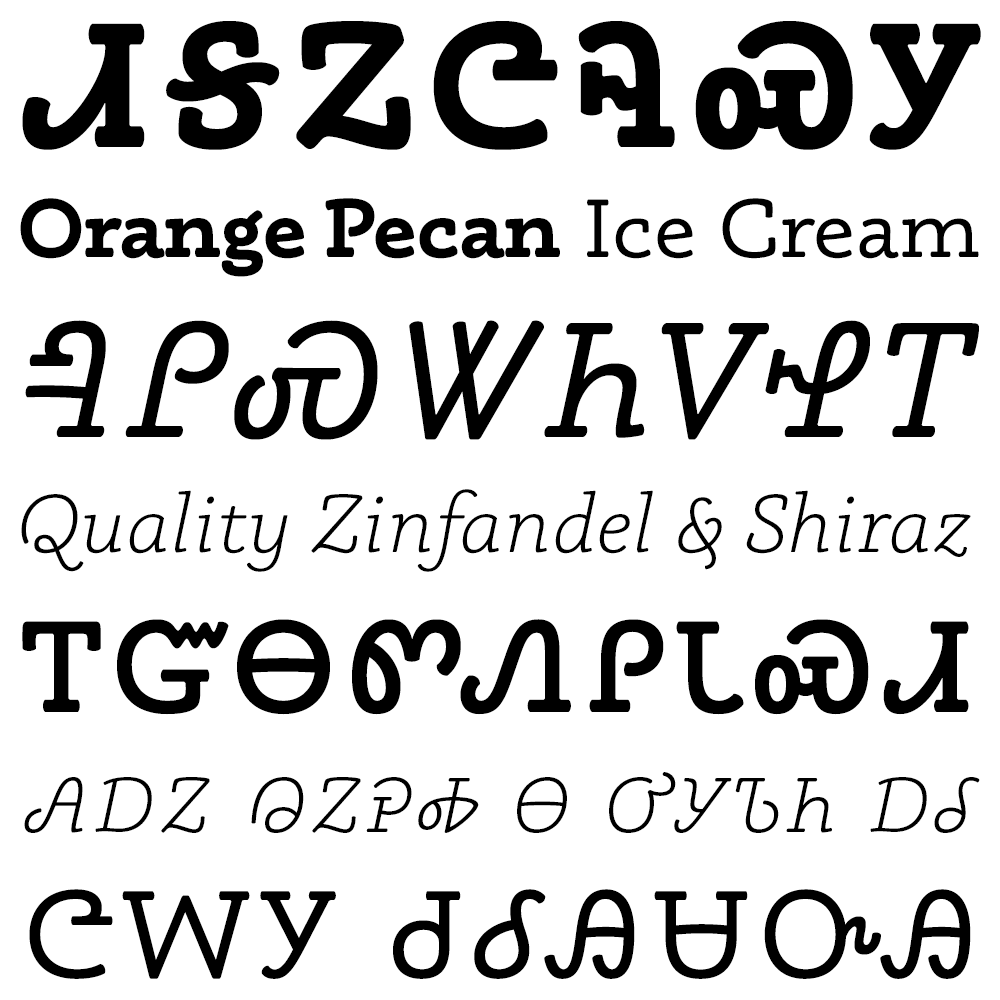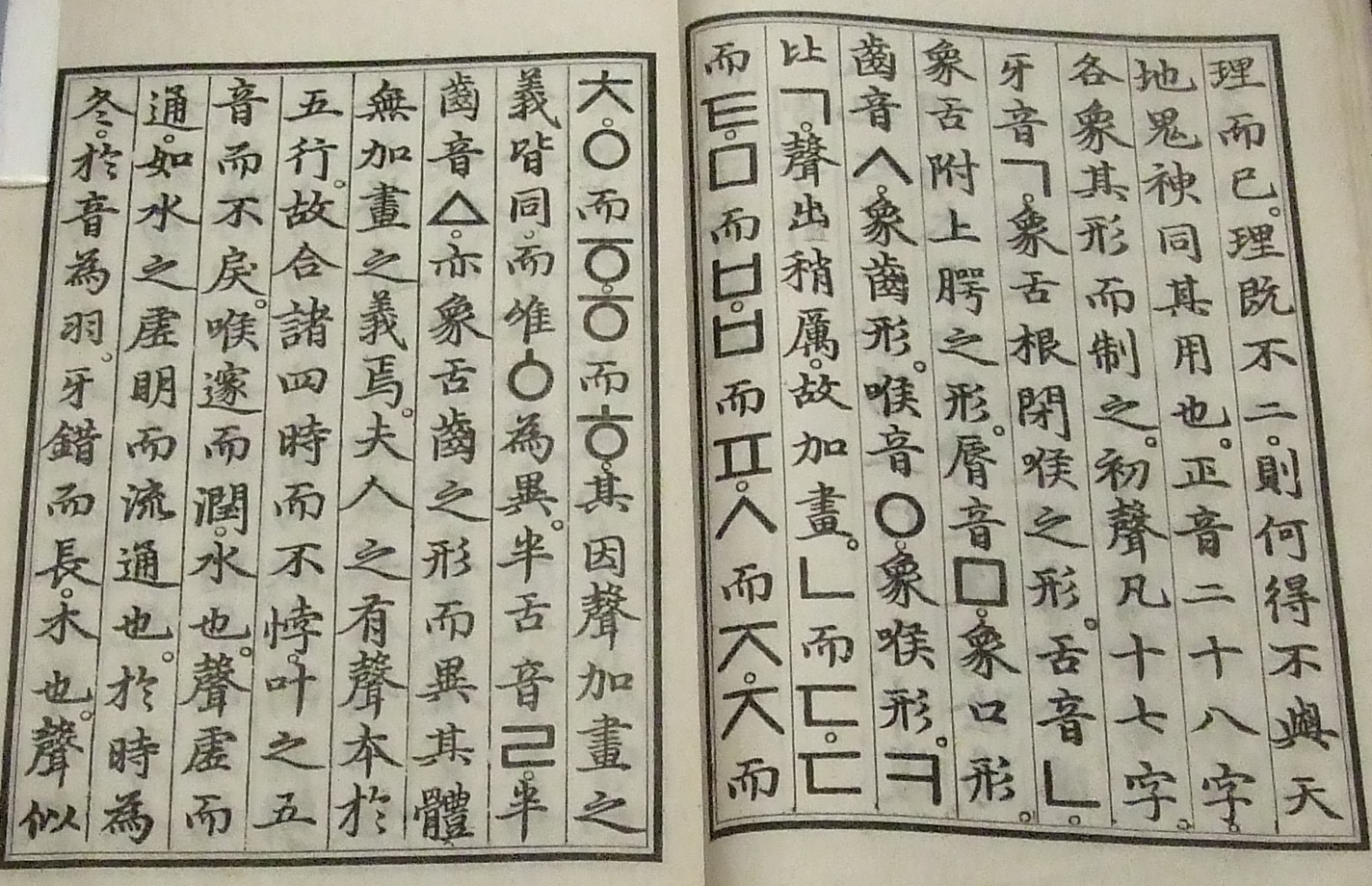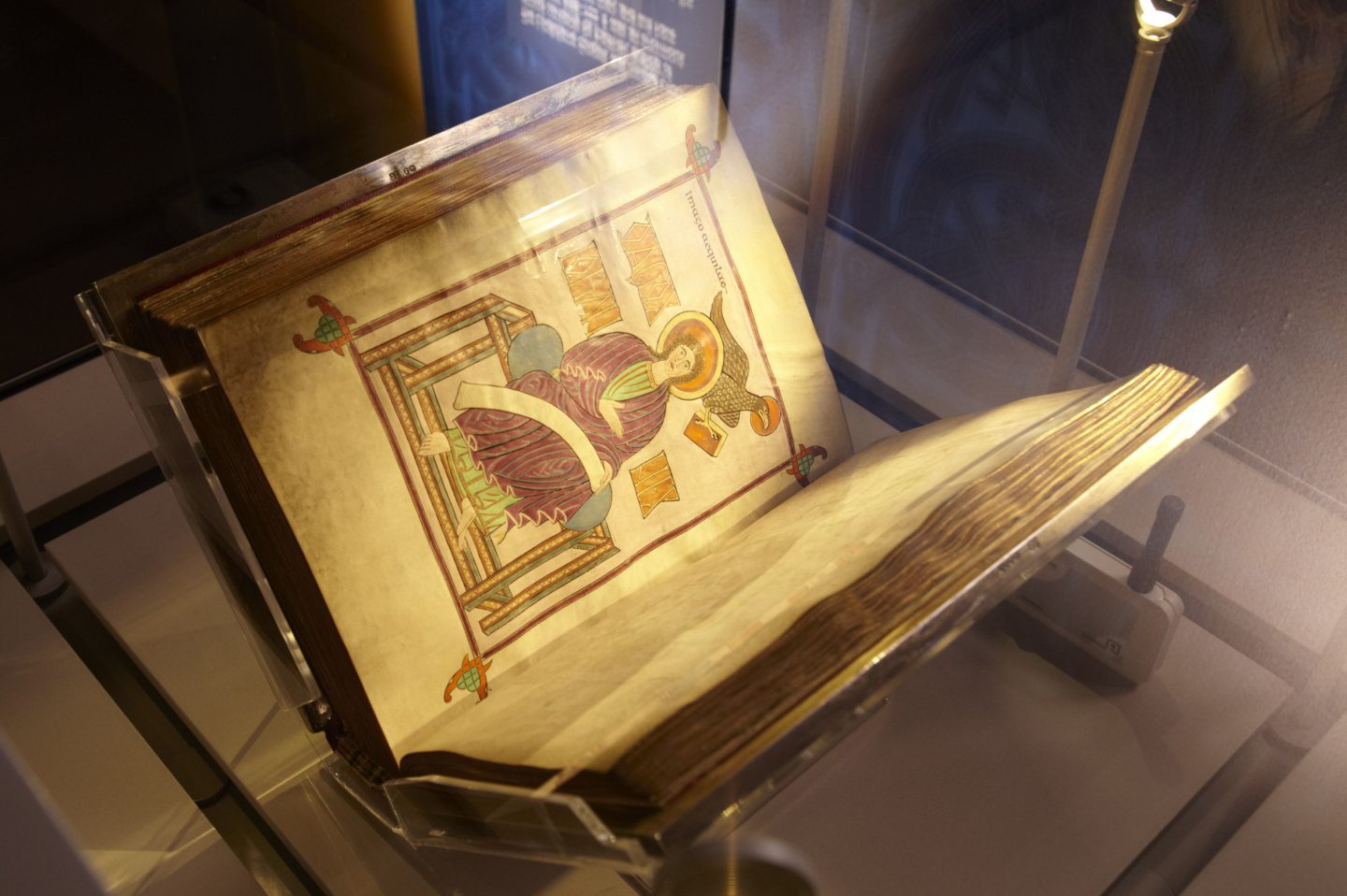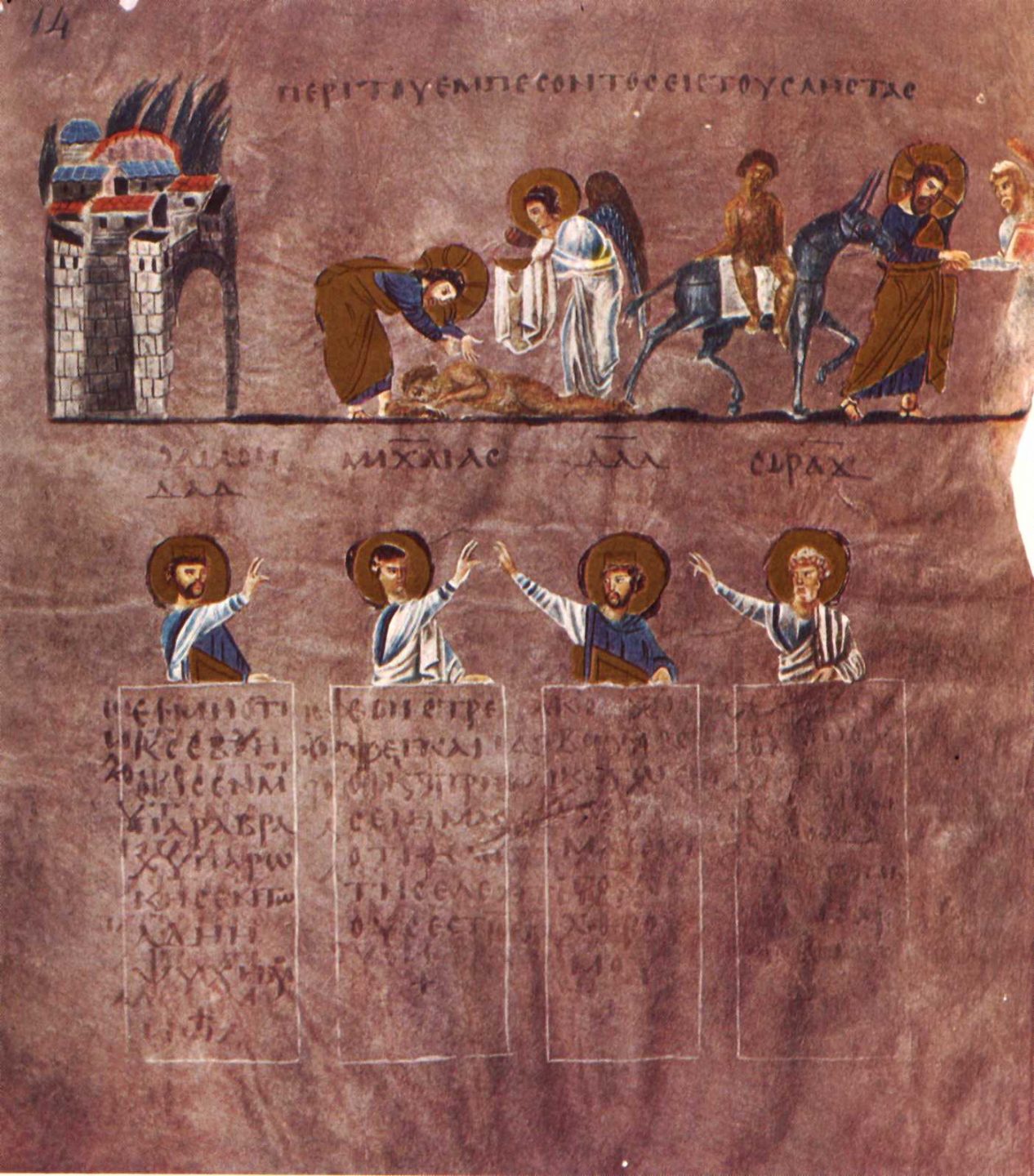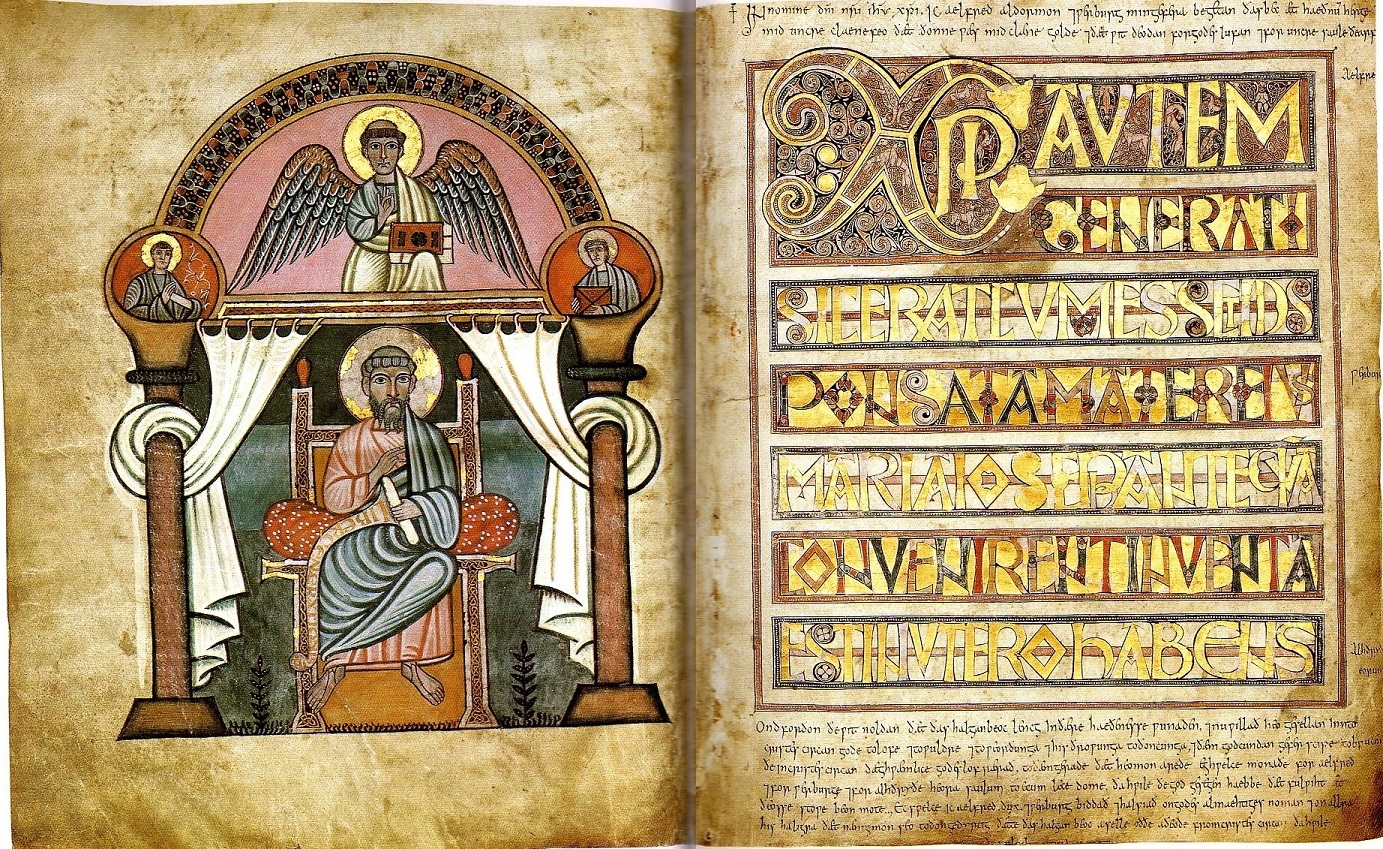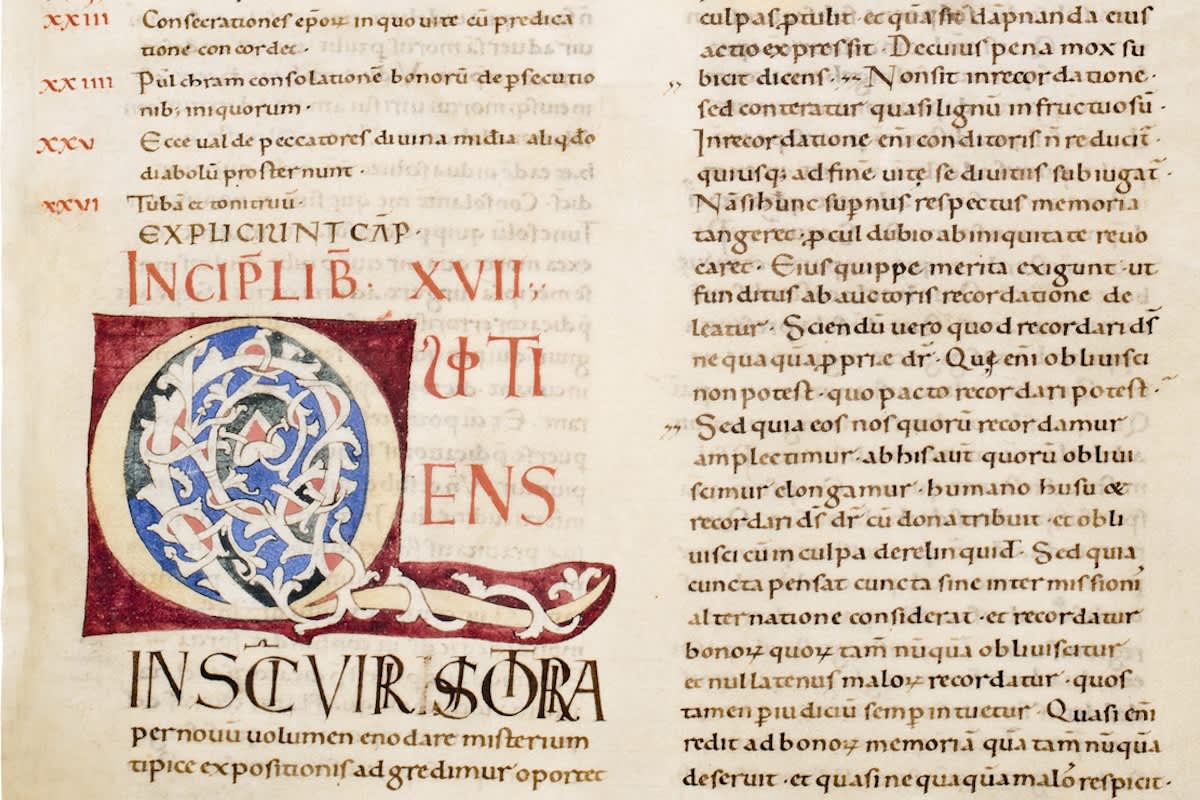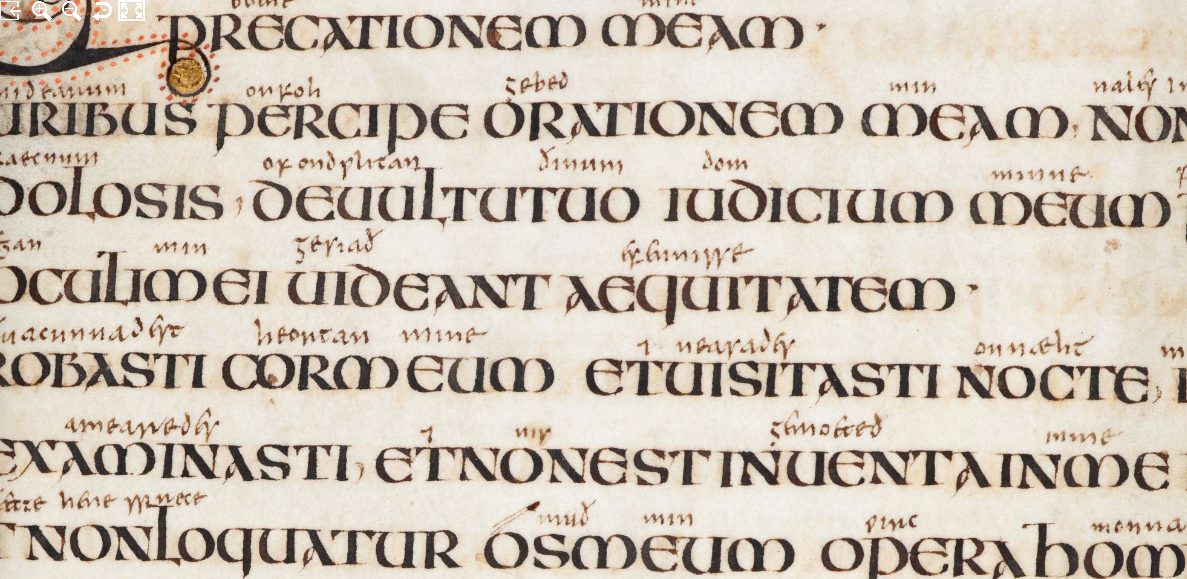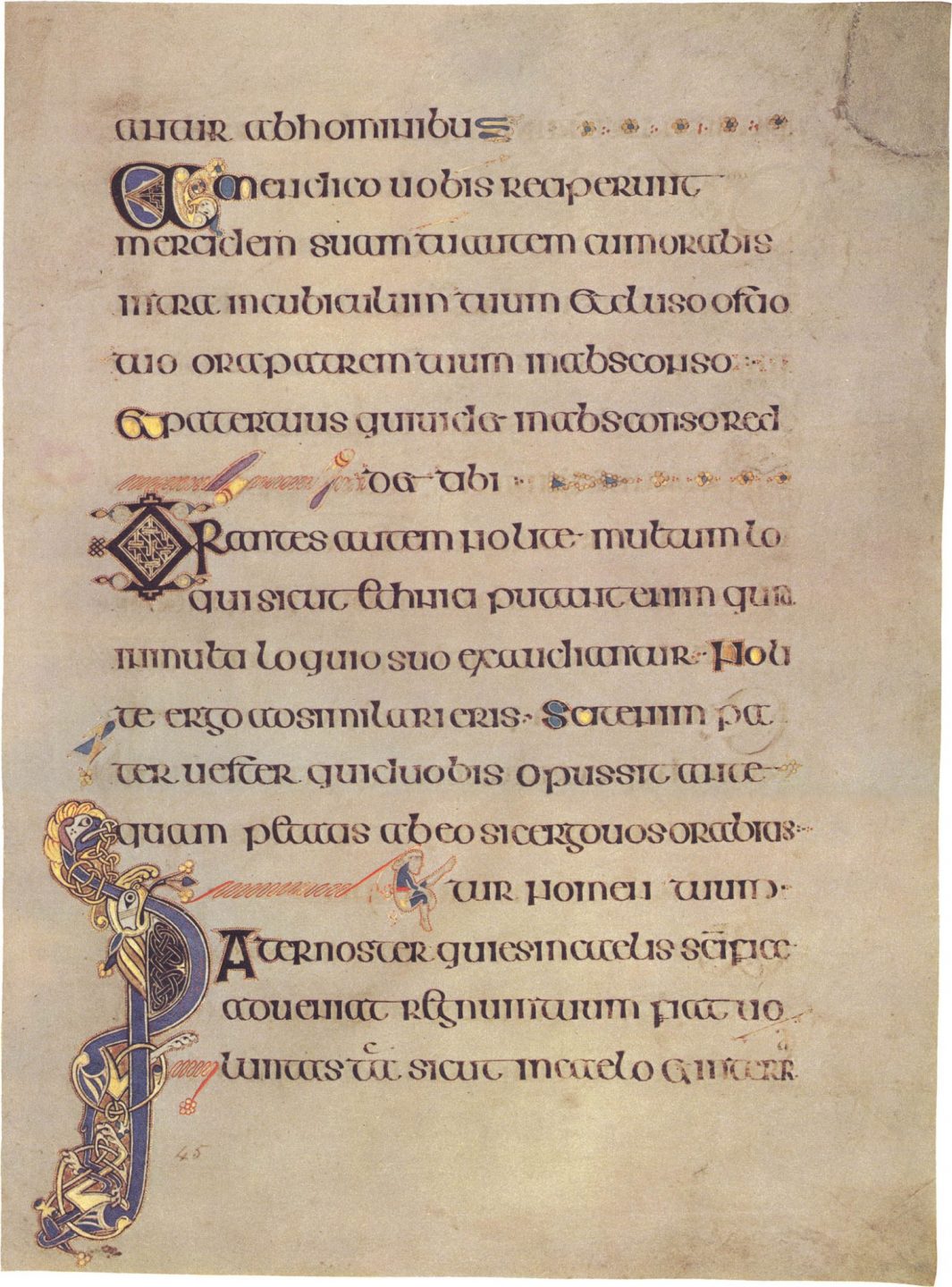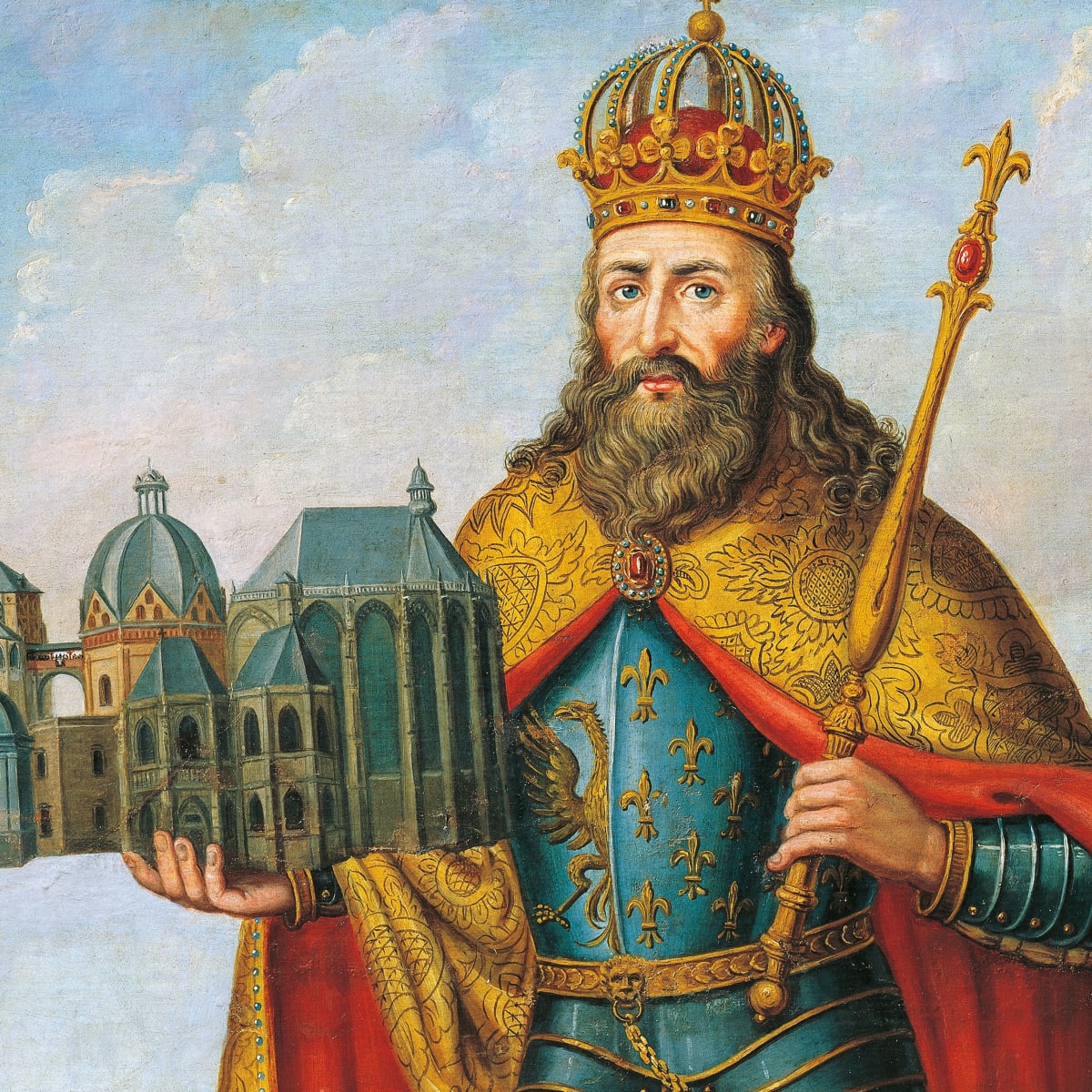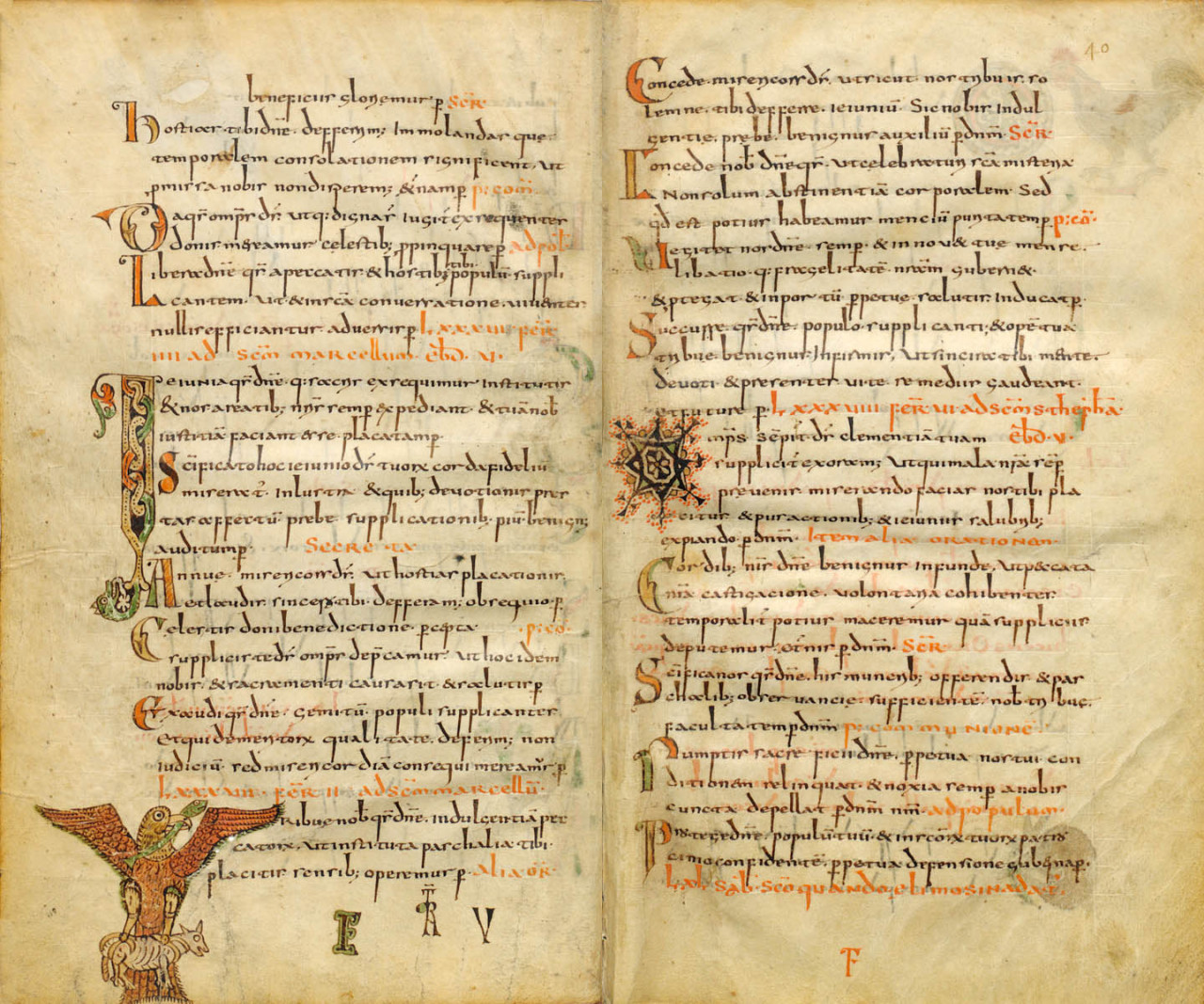05/01/2022
The Power of Language
An overview of the development of language systems from across the globe
While all species communicate in one way or another, only we humans have really taken it to another level. Our desire and ability to share and collaborate has been a huge part of our success story. Our modern world is based on a global network of information exchange made possible, in large part, by our ability to communicate—in particular using graphic or written forms of communication.Genevieve Von Petzinger
Language is everywhere. Words, letters, imagery, and iconography are ubiquitous and omnipresent. Through these elements, we are constantly connecting to ideas, data, products, media, and each other. We are rarely not engaged in the act of either giving or receiving language of some sort. It’s on our clothes, on our screens, and inescapable within our physical environments. From pop-ups to billboards, our minds are almost always in the process of taking in this never-ending stream of information.
Because language is so pervasive, we rarely take the time to actually acknowledge its presence and examine its function. The ability to communicate through words and messages is essential for navigating the contemporary world. These are the tools we use to understand ideas and concepts, define our thoughts, present our thoughts to others, and make sense of our realities. Yet, we are bound by the language we use. It both empowers us and limits us.
Because it is rarely questioned, language is often used to manipulate, and distract. Our current technologies have been developed to utilize and exploit this function of language. We are seeing in real time how language can be used as a vehicle to confuse, distort, and mislead. The simple act of creating a word or message and placing it into the public sphere can potentially generate significant responses— hope, action, inspiration, oppression, and violence. Language is that powerful.
Yet, language has always been an important cultural asset. From an historical perspective, the presence of language and language systems has long been a critical factor in the longevity, prosperity, and progress of civilizations. As a tool for recording and preserving history, spreading ideas and values, and establishing rule and order, language has many times been the singular factor that has allowed a culture to thrive and expand.
African Origins
The earliest evidence of written language is found on the continent of Africa. There are examples of the earliest beginnings of graphic communication— stylized markings on stones from Cape Town on the Southwest coast of South Africa that date back 73,000 years, fragments of ostrich eggs incised with geometric patterns that date back 60,000 years, also from South Africa. The first evidence of early written language was found in what was called Nubia—an ancient region in northeast Africa located along the Nile river between present day Egypt and Sudan. Nubia was home to some of the world’s oldest civilizations and there is evidence of early proto-language systems existing in this area that date as far back as 5000 BCE. Another example of an early African writing system is Nsibidi which developed in what is present day Nigeria. Formatted as a system of standardized pictographs, there are artifacts inscribed with Nsibidi that date as far back as 2000 BCE. Many scholars believe that the writing system dates even further back to 5000 BCE.
These early modes of communication found in Africa, along with examples found throughout Europe and Asia, are considered to be the starting point from which all of the world’s most widely used written language systems were formed. These drawings, abstract symbols, and stylized markings would, over thousands of years, evolve into complex communication systems. They would be adopted by larger and larger groups of people and, through their repeated use, become increasingly more sophisticated, modular, expansive, and standardized. Between 3,000 BCE and 500 CE, all of the world’s most widely used written language systems were developed.
In many of the world’s written language systems we see a similar process of development. In their earliest form, writing systems are often illustrative and literal— characters are pictograms meant to represent specific subjects such as plants, trees, animals, and the human form. As the language is used by more people, has to represent more subjects and ideas at higher levels of complexity, and in it’s increased use, has to be written faster and easier, the characters become more modular and easier to reproduce. These factors typically result in abstraction and simplification. Materials also inform the visual characteristics of a written language.
Cuneiform
Cuneiform, one of the earliest writing systems, perfectly illustrates this progression from the pictographic to the systematic. Developed by the Sumerian culture in the fourth millennium BCE, cuneiform first emerged out of a need for record keeping. The Sumerian culture was located along the Niger Delta between what is current day Iran and Iraq. They had a sophisticated economy centered on livestock and agriculture. Their writing system developed as a component of their economy—to monitor food supplies and record and account for financial transactions. The earliest version of cuneiform consists of pictograms—icons representing natural subjects like animals, trees and human figures. Later, as the system grew and was adopted by more people, the characters became more abstract. They gradually became simplified or streamlined versions of their former incarnation. The visual quality of the characters was also directly related to how they were implemented. The forms that make up the characters are wedge-shaped—resulting from the wedge shaped styluses that were made from reeds and used to incise the characters on wet clay tablets. Clay tablets are the primary graphic works of the Sumerians.
The first evidence of early Cuneiform symbols dates as far back as 3500 BCE. The language was used long after the Sumerian civilization ended. The system was adopted by other cultures such as the Assyrians and Babylonians. It was completely out of use by 700 BCE.
In addition to cuneiform, other innovations developed within the span of Sumerian culture. They were the first civilization to use currency—the earliest version was in the form of metal rings that were strung on a rope or string. These rings eventually evolved to the more familiar format of coins. Sumerians also developed signature seals which first appeared in the late 4th millennium BCE. These devices were elaborately carved cylindrical matrixes usually made out of stone or fired clay. They featured images of people, animals, and objects which were meant to represent the identity of the owner of the seal. The seals were rolled onto wet clay to make an impression which acted as a signature. The seals were used in social and financial transactions.
The Genesis of the Chinese Alphabet
The Chinese alphabet follows a similar development to Sumerian Cuneiform. According to historic record, the earliest version of Chinese characters was created by a man named Cangjie—an historian who was born around 2650 BCE and worked for the infamous Yellow Emperor. There is much mythology around Cangjie and his invented alphabet. Legend has it that he had four eyes which helped him observe the world in a more astute and detailed manner than the average person. Like the early cuneiform of the Sumerians, his alphabet was also inspired by nature. According to popular myth, Cangjie was walking in the wilderness to clear his mind and meditate when he spotted a set of animal tracks. He became captivated by the visual language of the marks on the ground. These tracks became the starting point for his symbology. Cangjie used other elements in his natural environment as inspirations for his symbols. His characters are illustrative icons representing trees, mountains, rivers, and other subjects he observed in his surroundings.
The earliest physical examples of Cangjie’s script date back to the late Shang dynasty, between 1250 and 1050 BCE, and are found on oracle bones which were used in occult practices and divination rituals to predict the future and communicate with royal ancestral spirits.
During the Qin Dynasty between 221 and 206 BCE, the script became more refined and standardized. The characters were commonly used in Chinese “Chops” or signature seals which gained prominence during this time. These seals were devices made of wood, soapstone, sea glass or jade with a carved surface which creates an impression— most often in wet clay. During the early Tang Empire, 618 to 907 CE, an ink made from cinnabar began to be used to create a red stamped impression on fabric or paper most often employed for Chinese documents and artwork.
Throughout its history, the Chinese language has gone through many evolutions—the most contemporary standardized form is called Regular Script which was fully developed by the 7th century. Regular script is what is commonly used in modern applications.
The most culturally significant expression of the Chinese alphabet is found in the medium of calligraphy. Long revered as the most elevated form of creative expression in Chinese culture, the practice of calligraphy is thought to capture, through its elements of movement and gesture, not only the essence of the calligrapher, but the energy of nature.
In the 1930’s and 40’s, many leading Chinese writers and educators participated in a campaign to streamline and refine Chinese characters in an effort to boost education. Their theory was that character simplification would increase literacy in China. The outcome of this campaign, though seemingly beneficial, has been debated by many Chinese educators and officials.
The Chinese writing system is used today by more people than any other writing system in the world. The complete alphabet contains around 50,000 characters. Scholars know and use about 20,000; while the typical educated citizen uses less than 4,000 within daily use and application.
“Learning how to read and write Chinese is difficult because there is no alphabet or phonetic system. Each written Chinese word is represented by its own unique symbol, a kind of abstract diagram known as a “character,” and so each word must be learned separately through a laborious process of writing and rewriting the character till it has been memorized. To read a newspaper requires a knowledge of around 3,000 characters; a well-educated person is familiar with about 5,000 characters; a professor with perhaps 8,000. More than 50,000 characters exist in all, the great majority never to be used.
Yet the limitation of the written Chinese language is also its strength. Unlike written words formed from alphabets, Chinese characters convey more than phonetic sound or semantic meaning. Traditional writings about calligraphy suggest that written words play multiple roles: not only does a character denote specific meanings, but its very form should reveal itself to be a moral exemplar, as well as a manifestation of the energy of the human body and the vitality of nature itself.”
Delbanco, Dawn. “Chinese Calligraphy.” In Heilbrunn Timeline of Art History. New York: The Metropolitan Museum of Art, 2000–. http://www.metmuseum.org/toah/hd/chcl/hd_chcl.htm (April 2008)
The Egyptian Perspective
Within the timeline of history, the hieroglyphics of the Egyptians are considered one of the most unique and enigmatic writing system ever created. Located on the Northeast perimeter of Africa bordering the continent of Asia, Egypt’s ancient kingdom prospered for over 2500 years until it was conquered and assimilated into the Greek empire by Alexander the Great in 332 BCE. The first evidence of early Egyptian pictographs dates back to 3100 BCE. Towards the end of the Roman empire, when Christianity became the official religion of the Roman kingdom and the power and authority of Roman leadership first began to crumble, emperors like Theodosius the Great initiated campaigns to eradicate all competing religions. In addition to suppressing all evidence of the pre-Christian paganism that had defined the Roman worldview up until the 2nd century, there was also a focus on eliminating access to temples and religious artifacts from other cultures. In 391 CE, Theodosius closed all Egyptian temples. This marks the beginning of a 1500 year period where the contributions of ancient Egypt were lost to the Western world. Although the language, culture, and contributions of Egypt had a significant foundational influence on the European perspective, during this time, that connection was forgotten. During the Dark Ages (the 5th through the 15th century), any comprehension of history and cultural context was obstructed by the geographic, political, and social isolation and fragmentation that shaped the zeitgeist of medieval Europe. This lack of perception was further perpetuated by the myopic zealotry of Christian faith which was dominant during this time.
It is now understood that Egyptian culture was highly advanced and driven by a value system and cultural perspective very different from any other past or present. Their worldview was uniquely centered on death and defined by ritual and spirituality. Within the society of ancient Egypt, just as much emphasis was placed on the afterlife as on physical experience. Their social and political system combined social status, spiritual belief, and an occupation with the supernatural. Their writing system of hieroglyphics played a significant part in every aspect of Egyptian life.
This culture of death is exemplified in the major graphic works of the Egyptian civilization—elaborate, hand painted papyrus scrolls called Books of the Dead that functioned as guides into the afterlife. The Egyptians developed a method for making scrolls from a paper like substance made from the papyrus plant that grew along the Nile river. The process for forming papyrus scrolls—layering multiple papyrus strips to create a single sheet— is considered a precursor to paper-making and was later adopted by other cultures like the Phoenicians, Greeks, and Romans.
Within Books of the Dead, illustrators and scribes would paint vivid and vibrant scenes which depicted gods—human and animal hybrids that played specific roles within Egyptian mythology—enacting elaborate ceremonies centered on the judgment of fate in an alternate universe between life and death. Figures like Horus, who had the head of a falcon, and Anubis, a jackal headed deity, were common figures depicted in Books of the Dead. Anubis weighed the heart of a person against the feather of Ma’at, the goddess of truth. If the heart was judged to be impure, Ammit would devour it, and the person undergoing judgment was not allowed to continue their voyage towards immortality. In addition to these mythical scenarios, the scrolls contained an accompanying narrative of hieroglyphics—a language of graphic symbology which incorporates elements of abstraction, stylization, and simplification. Hieroglyphics epitomize the elegance, sophistication, and complexity that are hallmarks of the Egyptian perspective.
The quality and opulence of the Books of the Dead aligned with the social position and economic status of the person for whom the book was created. Royalty and members of the elite class would hire the best artists to paint the figures and hieroglyphs that adorned the scrolls and would commission grandiose versions while subjects of lesser stature or who had fewer economic resources would require templative versions that were pre-made and later embellished with hieroglyphs by lesser scribes in empty spaces left blank for customization.
For over a thousand years, it was believed that Egyptian Hieroglyphs were purely visual elements rather than an actual language. In 1799 during Napoleon’s Egyptian expedition, his troops unearthed the Rosetta Stone in the Egyptian town of Rosetta. The stone is inscribed with Egyptian hieroglyphics, a later Egyptian script, and Greek. Between 1800 and 1832, by studying these three inscriptions, archaeologists were able to decipher the symbols and discovered that Hieroglyphics are indeed a language. The symbols are phonetic—each symbol represents a singular sound and they combine to form words. This type of visual device is called a Rebus.
Though visually dynamic and beautiful, the intricacy and illustrative quality of the hieroglyphics made them unsuited for everyday use. Cursive or more abbreviated versions of Hieroglyphics existed for more utilitarian and casual applications. Hieratic script, developed early on in the third millennium BCE, was used for writing administrative documents, accounts, legal texts, and letters, as well as mathematical, medical, literary, and religious texts. It was primarily written in ink with a reed pen on papyrus. Demotic text emerged much later, between 650 and 400 BCE, and was used in more formal situations as in esteemed literary and religious texts.
The Phoenician Alphabet
Though first appearing between 1550 and 1200 BCE, the Phoenician civilization was at its height between 100 and 200 BCE. Centrally located along the Mediterranean Sea on the Northern Coast of Africa and touching parts of the coast of Western Asia and Southern Europe, the Phoenician Empire was well positioned to become a center for commerce. Many Phoenicians were seafaring merchants who traded with numerous civilizations. One of those civilizations was Egypt. This interaction eventually led to the development of a shared language. Phoenicians working in Egypt collaborated with Egyptian scribes to develop an understanding between the two cultures. This continual fellowship eventually evolved into a formal system of communication. Using Egyptian Hieratic script as a starting point, over many years what resulted was a Phoenician alphabet consisting of 22 letter-forms that would serve as the foundation for the Greek and Roman alphabets. This Phoenician alphabet was fully formed by 1050 BCE.
Greek Contributions
The Greeks adopted the 22 characters of the Phoenician alphabet around 1000 BCE and added two more characters—Epsilon and Iota which correspond to the contemporary Latin letter-forms “E” and “I”. The Greeks also incorporated more structure into the way they applied the adopted Phoenician letter-forms. The use of the grid as a tool for facilitating organization and symmetry was predominant in Greek culture and was applied in numerous ways in fields like art, architecture, mathematics, and city planning.
Around the 2nd century CE, a more rounded version of the Greek alphabet begins to appear. These letterforms, called Uncials, were more fluid and open. They were typically used in applications that were more casual and informal. Uncials could be written quicker and be more easily applied to a wider variety of surfaces in a wider variety of mediums. The development of Uncials illustrate how materials, tools, and motivation can shape the visual embodiment of a language. The motivation was speed and efficiency, the tools were hard reeds cut into nibs that had a split at the top to aid ink flow, and the surface material was papyrus, wood, clay, and wax tablets.
The Roman Empire
Greece was assimilated into the emerging Roman empire in 31 BCE after the battle of Actium. At this point, The Roman empire was already using a version of the Greek alphabet which was adopted from the Etruscans. The version that the Romans used consisted of 20 letter-forms that look identical to contemporary Latin uppercase.
In addition to being the first man in recorded history to open a private elementary school, Roman educator Spurius Carvilius Ruga is credited with inventing the letter “G” to remedy a phonetic problem with the adopted Greek language. At the time, the letter C was confusingly used both for the “k” and “g” sounds.
Y and Z were also eventually added to aid the Romans in pronouncing sounds that were distinctly Greek and previously not part of the Roman vocabulary.
The most significant contribution of the Romans is their creation of idealized letter-forms through the use of the grid as an element of structure, symmetry, and refinement. Like the Greeks, the Romans incorporated the grid as a tool for creating idealized form and proportion. An example of this elevated visual execution can be found in Trajan’s Column—a Roman triumphal column in Rome, Italy, completed in 113 CE to commemorate Roman emperor Trajan’s victory in the Dacian Wars.
The types of letter-forms used in this commemorative work are called Square Capitals. These are characters which are constructed with perfect proportions and used in formal settings like inscriptions, sacred documents, and architectural applications. The Romans had another version of letter-forms used for more common, hand lettered applications called Rustic Capitals. These characters were more fluid and more spatially economic than Square Capitals.
It has been stated that literacy rates among active Roman citizens could have been over 80%. This means that more people were using written language more often—for political, administrative, social, and economic transactions. For these mundane applications there evolved a looser more informal version of the written language called Latin cursive.
Romans used a wide variety of materials as a surface for writing—clay, wax tablets, wood, metal, and papyrus. Around 190 BCE, parchment — a paper-like substance made from the skins of young animals such as lambs and young calves—became the dominant substrate for writing. This material was used to make codexes which were sheets of parchment folded and stitched together to make what is essentially a book. Papyrus scrolls were unwieldy, hard to store, and easily damaged. During the last 400 years of the Roman empire Christianity began to rise and Christian scribes used codexes almost exclusively for recording sacred texts. On the other side was the traditional practice of paganism which was almost always associated with the earlier format of papyrus scrolls.
These ancient Christian texts are the precursors to the illuminated manuscripts which are the major graphic works of the middle ages.
Rome was eventually conquered by barbarians and fell in 476 CE. At its height, the Roman empire was defined by its values—democracy, self sufficiency, and cultural participation. Every citizen was encouraged to engage in social and political interactions. Education and the pursuit of knowledge were not just encouraged but championed. This devotion to progress, knowledge, and self realization has a name—humanism. The trait of humanism defined the world view of both the Greek and Roman empires until Christianity emerged in the 4th century. Humanism and its corresponding visual attributes would later become a vital inspiration for scholars, artists, and educators in pre- Renaissance Italy as well as a foundational element in the formation of modernism in the late 1800’s and early 1900’s. The influence of Roman typography is still very much present in our contemporary practice.
By the beginning of the common era over 2,000 years ago, the Latin alphabet—named after the region of Latium in central western Italy in which Rome was founded—was almost fully formed. The uppercase letterforms are identical to the ones we use today. If we survey the evolution of these letterforms, we see a progression similar to both the Sumerian’s cuneiform and the Chinese alphabet. We begin with hieroglyphics which are pictographs—illustrative icons meant to represent specific objects. Over thousands of years of refinement and adaptation from numerous cultures—Egyptian, Phoenician, Greek, and finally Roman—these pictographs gradually change into the alphabet that we recognize. In a way, the Phoenician alphabet serves as a midway point—we can see evidence of the earlier Egyptian symbols within their visual character. Some of the original images that these shapes were supposed to represent still come through. We can also see traces of the Latin or Roman letterforms that they will eventually become.
But the 22 characters of the Phoenician alphabet are not just the foundation for the Roman alphabet. Geographically, the Phoenicians were positioned where the continents of Europe, Africa, and Asia come together. They interacted with many different cultures. The Phoenician alphabet also serves as the foundation for the Arabic and Hebrew alphabets. This means that many of the world’s most widely used written language systems have a shared origin —the Hieroglyphics of ancient Egypt.
The function of Language Systems
We have surveyed the way in which written language systems have evolved and progressed. Once adopted and used within a culture, written language serves a variety of critical cultural functions—as an emblem of cultural identity, as a tool for connection, and as a means to record and preserve cultural legacy. If you meditate on your own experience—think about all of the way your language serves you. Imagine what access and opportunities your language grants you—the information and ideas you can, through language, connect to. There are countless examples throughout history of leaders who have understood this power of written language and who have created written systems to preserve, protect and advance their cultures and communities. What follows are some key historic examples that illustrate the ability of written language to foster independence, freedom, and progress.
Ge'ez—Ethiopic Script
Ge’ez, the written language of Ethiopia is over 2,500 years old and has been in use since the 4th century. At first the script consisted solely of consonants. Vowels were incorporated around 350 CE. The script in its entirety has a total of 182 syllographs—symbols that represent syllables. The script is used to write Amharic, the national language of Ethiopia which has about 22 million speakers worldwide. Ethiopia is the only country in Africa to still have its native language as one of its national languages. Ethiopia and Liberia are the only two African countries that have never been fully colonized. Many historians attribute this to a strong sense of cultural identity and many of those historians believe that the presence of a consistent language system is a significant factor in fostering that sense of identity.
The Bamum Scripts
The Bamum Scripts are a series of six scripts created between 1896 and 1910 by King Ibrahim Njoya. The scripts were meant to function as a written counterpart to the language of the Bamum Kingdom of Cameroon.
Located on the west coast of Central Africa, Cameroon is just south of Nigeria and north of the Republic of Congo. The Bamum kingdom first established itself in the city of Foumban in the early 1700’s. It soon had between 10,000 and 12,000 within it’s domain.
In 1896, King Njoya began the project of creating a written alphabet for the Bamum culture. He was 25 years old. Over 14 years of development, the scripts, referred to as Shu-mom, evolved from a pictographic system to a partially alphabetic syllabic script.
In addition to designing a series of complete writing systems, Njoya wrote a series of manuscripts detailing the history of the Bamum people, designed a calendar, drew maps of his kingdom, and kept administrative and legal records. He also built schools, libraries and a printing press. In 1918, metal type was cast from the final incarnation of his Bamum scripts.
He also brought together the most esteemed creative minds of his kingdom to advance art and culture within the Bamum kingdom. Njoya understood the importance in creating a strong unified culture. He also understood the importance of an established language as a means of stability
The French took control of Cameroon as part of their campaigns of colonization in the early 1930’s. The French army destroyed all of what King Njoya had created. He was sent into exile by the French government and died in 1933. His sons have since taken over the Bamum Kingdom and worked to preserve his legacy.
Sequoya’s Syllabary
Sequoya was born in 1770 in the Cherokee town of Tuskegee located in Eastern Tennessee. Growing up, he opposed the assimilation of Cherokee people into the culture of the white settlers. He wished to preserve the culture and legacy of his people and understood the threat that “civilized” Euro-American culture posed to indigenous people. Sequoya was a self taught blacksmith and silversmith. In his occupation, he regularly did business with white settlers and observed the way they used written correspondence in the form of letters, receipts, and other ephemera. He began to understand the function that their written language served—it allowed them to correspond with one another in a way that was consistent, standardized, and, at times, private. They used their written language to record information, share ideas, send messages over great distances, and keep track of business transactions. Sequoya saw the value in developing a similar system for the Cherokee spoken language, which, at this point had no written counterpart.
Sequoya began to envision a written alphabet that could capture the unique phonetic characteristics of the Cherokee spoken vernacular. At first he tried making a character for every word, but found that the resulting system would be too complex. He finally settled on a syllabary —a system which contained a symbol for each syllable in the language.
After over ten years of experimentation and development, Sequoya completed the Cherokee syllabary in 1821. Sequoya first taught the syllabary to his six-year old daughter Ayoka because he couldn’t find anybody else willing to learn it. At first, many people in his community were suspicious of his writing system. Some thought it was witchcraft and some thought it was too close to the writing system of the white settlers. Sequoya understood that, in order to convince people of the value of his writing system, he had to get support from Cherokee leaders, He devised a plan. When he met with key figures in the Cherokee community, he would bring his daughter who would, at the start of the meeting, wait outside. He would first ask the leader to say a word which he would then write—in his syllabary— on a piece of paper. Next, he would ask his daughter to come into the room and she would repeat the word. This strategy sparked excitement and curiosity in his writing system. Sequoya was eventually able to convince Cherokee leaders of its importance.
Though many Cherokee had previously expressed concerns about using a system of writing—fearing it was a sign of surrendering to white customs— the people of the Cherokee Nation rapidly began to use his syllabary and officially adopted it in 1825. Within 50 years, their literacy rate surpassed that of the surrounding European-American settlers.
Since its initial development, Sequoya’s Cherokee syllabary has been in continual use. It is taught in a number of schools and universities as well as used in countless applications—from the publications of literature of all kinds to websites and street signs located in cities of the Cherokee Nation like Tahlequah, Oklahoma and Cherokee, North Carolina.
Sejong’s Hangul
In illustrating the ability of language to empower and advance a culture, there is no better example than the Korean alphabet. Referred to as Hangul, the alphabet was created and instituted by Sejong the Great who was appointed as king of the Joseon dynasty in 1418. The youngest of three sons, Sejong was the last in line for the throne. He was given the crown only after his 2 older brothers were deemed unfit for the responsibilities of royal leadership (one brother became a monk). Once in power, Sejong promoted equality and instated many policies that gave representation to those across different social classes. He also championed Confucianism —an ancient system of belief centered on the teachings of the Chinese philosopher Confucius who lived from 551 to 479 BCE. Under his rule Confucianism became popular throughout Korea. It’s focus on humanism, self realization, empathy, fairness, and rational thinking were reflected in the political reforms executed under his administration. These attributes also played an important role in his development of a native writing system for his people.
Before the invention of Hangul, an alphabet derived from classical Chinese script called Hanja was the most widely used writing system for the Korean language. There were also several variations and alternate versions of Chinese characters that were in use. The Chinese alphabet was not the best fit for the Korean language. There were significant differences between the spoken language of Korea and the written characters of Chinese. Also, the version or the Chinese alphabet used for Korean at the time had 50,000 characters—it was very difficult and time consuming to learn. For those who did not have the privilege of education, it was not accessible. Sejong wanted to promote literacy across all classes. He also wanted a national language that reflected the unique identity of Korean culture.
Sejong created an alphabet that was in contrast to the Chinese system. Instead of 50,000 characters, the Korean alphabet only had 28 (and eventually this would get streamlined to 24). The modest amount of characters made it easy to learn. Their design is thoughtful and rational. The consonants act as diagrams of the shapes that the mouth, tongue, and teeth form when producing their corresponding sounds. For example, the character for ‘m’ is a square box representing the speaker’s lips pressed together. Vowels are formed by combinations of dots and lines representing heaven (a circular dot), earth (a horizontal line) and humanity (a vertical line). The characters of Hangul are written both horizontally and vertically. It is both alphabetic and syllabic. Today, it is typically written from left to right with spaces between words and western-style punctuation.
Sejong’s alphabet was completed in 1443 and was immediately met with opposition form scholars and the literary elite. The upper classes of Korea rejected Hangul and eventually the language was banned soon after Sejong’s death in 1504 By the late 1500’s, Hangul began to reemerge and gain popularity—particularly among writers and poets. In the 1800’s, a series of government reforms resulted in widespread nationalism in Korea and Hangul was embraced as a distinct part of the Korean identity.
Korea was occupied by Japan for 30 years— from 1910 to 1945. During this time, the Japanese empire attempted to dismantle Korean culture. Korean historical artifacts and documents were destroyed. The Korean Royal Palace was destroyed along with many other historic buildings. Korean citizens were forced to adopt the Japanese language—Hangul was forbidden. Later in the occupation, during the 1930’s, Koreans were forced to take Japanese surnames.
In the wake of World War 2. Korea once again gained their independence. Korea emerged from their period of occupation as a divided country. But both North and South Korea have since adopted Hangul as their official language. Both North and South Korea have holidays celebrating Sejong and his Hangul alphabet— Hangul Day in South Korea on October 9th, and Chosŏn’gŭl Day in North Korea on January 15th.
The Fall of Rome
For our next example illustrating the capacity of language to facilitate cultural progress and connection, we have to trace the deterioration of European society in the Middle Ages. Let’s begin with the milestone that kicked off the period in history often referred to as “1,000 years of darkness”—the fall of Rome.
Many factors led to the fall of the Roman Empire in 476. In the early 4th century, the Empire was split into two territories—East and West. The civil wars that resulted from the rivalry of the two emperors that ruled these areas weakened the empire and allowed invaders to infiltrate the Roman borders. For most of the 4th century, the bridge between the rich and poor widened, eroding the sense of democracy and civility that had once exemplified Roman society. As the bureaucratic and militaristic infrastructures of the empire continued to erode, what took its place were independent settlements of tribes like the Huns, Goths, and Franks. Many of these provinces gradually developed into the flourishing monarchies that made up the ruling class of Europe in the Middle Ages.
The Graphic Works of the Dark Ages
In 313, Roman emperor Constantine ended the persecution of Christians and declared tolerance of the religion. The spread of Christianity was rapid and, later that century, it became the official religion of the Roman Empire. Constantine was the first among many rulers to align himself with the church thus establishing religious institutions as centers of social, intellectual, and political influence for years to come. In the last phase of the Empire of Rome, as the emperor’s power and authority began to significantly wain, the domination of Church leaders in political affairs was established. This supremacy of the Church within the cultural and political spheres would define the socio-economic structure of the Middle Ages.
This new structure generated a culture centered on religious dogma. The independent thinking and self-realization of the preceding Roman empire gave way to a worldview centered on superstition, judgment, piety, and fanaticism. The graphic works that embodied this perspective are large, bound texts called illuminated manuscripts.
Named for their luminous gilded decorative details, illuminated manuscripts were made by hand and meticulously hand lettered by scribes and hand illustrated by artists using metallic embellishments alongside rich and opulent colors of ink. A typical manuscript took about 25 sheepskin to make and took 4 to 5 months to complete. —1 book cost about as much as a farm or vineyard. These manuscripts were considered important articles of cultural significance.
Illuminated manuscripts were mostly religious in nature, however there are examples of manuscripts dedicated to subjects like math, science, history, and literature. Illuminated manuscripts were most often created by monks in scriptoriums located in monasteries or other religious institutions. These locations were established as centers of cultural information. Their role as locations for housing cultural records and artifacts further strengthened their power and authority.
The format of illuminated manuscripts can be found across numerous cultures in countries in Europe and beyond. There are Hebrew and Muslim manuscripts.
There was much demand for illuminated manuscripts. They were the sole vehicles of media, written record, and cultural discourse for a large part of the Middle Ages. Because of this demand and the high cost of their production. Scribes had to execute their roles as quickly as possible. Over the course of the Middle Ages, what took place was an evolution of written letter-forms whose visual appearance was informed by an incessant demand for books. The need to write faster, more fluidly, and to fit more words on a page increased more and more as the Middle Ages wore on. The different writing styles that emerged out of this time formed as responses to these unideal circumstances.
The writing style employed in early manuscripts is the Greek uncial. These letter-forms are entirely majiscule, or uppercase, and were developed by Greek scribes in the later part of the Roman Empire. They were an understandable choice for the scribes painstakingly hand-lettering manuscripts in scriptoriums across Europe in the early Middle Ages. They were a known writing style, they were fluid, and their forms facilitated quick and easy application.
Around 600 AD, flourishes in the form of ascenders and descenders began to appear in the written forms of manuscripts. Over a period of many years, these forms eventually evolved into half-uncials which functioned as minuscule, or lowercase, letters.
Charlemagne’s Reforms
Born in 742 in what is modern day Germany, Charlemagne came from a line of Frankish rulers. The Franks originated as Germanic tribes who began to seize power during and after the fall of Rome. The exact location of Charlemagne’s birth is not entirely known. Historians have narrowed it down to areas of the Frankish kingdom that are now either modern-day Germany or modern-day Belgium. He and his brother were crowned kings upon the death of their father Pepin the Short in 768.
Almost immediately Charlemagne began to expand the Frankish Kingdom. By the turn of the century, he had united most of Western Europe under what is called the Carolingian Empire or Holy Roman Empire.
On Christmas day in 800, Charlemagne was crowned Emperor of the Romans by Pope Leo III. During this time, it was widely acknowledged that Europe was in a state of decline. Charlemagne was inheriting a kingdom that was suffering from illiteracy, poverty, and a severe degradation of arts, culture, and education.
Charlemagne set out to establish a series of reforms to address these issues. He first installed a system of feudalism in which a relationship was established between upper and lower classes that centered on land being given in exchange for labor and servitude. Charlemagne then focused on the written language. After the fall of Rome, large areas of Europe, once unified under central political authority, began to disintegrate into small fragmented communities. People of Europe were no longer connected to a unified political, social, and economic order. This resulted in the deterioration of fundamental elements of society and culture like social customs, political protocols, and language. In these fragmented rural societies, extreme digressions in dialect and written language occurred and standards significantly diminished.
Charlemagne brought together a team of the best scribes and educators in the Empire and commissioned them to create a standardized writing system called the Caroline minuscule—the forerunner to our contemporary lowercase alphabet. He also brought in Celtic scribes to establish an elevated approach for producing religious manuscripts. In the resulting system we begin to see the use of capitals and lowercase letters together as a standard practice as well as the introduction of punctuation. Charlemagne’s reforms are seen as the turning point in Europe in the Middle Ages—an important catalyst that, over many years, generated improvements in education, literacy, and general living conditions throughout Europe. Under the Holy Roman Empire, a steady and centralized government in the form of wealthy monarchies began to emerge. Education grew and more universities began to be created—literacy was finally on the rise.
